Watch the Animal Village place name story, told by Elder Wilson Wewa.
Animation by Jon Yellowhair and oral storytelling by Elder Wilson Wewa of the Confederated Tribes of Warm Springs.
 Confederated Tribes of Warm Springs Elder Wilson Wewa. Though the stories of his ancestors are traditionally shared orally, he has gathered many of them in his book, Legends of the Northern Paiute, which includes a telling of Animal Village, so that they may be shared with those unable to hear them from an Elder. Photo: Tara Kerzhner
Confederated Tribes of Warm Springs Elder Wilson Wewa. Though the stories of his ancestors are traditionally shared orally, he has gathered many of them in his book, Legends of the Northern Paiute, which includes a telling of Animal Village, so that they may be shared with those unable to hear them from an Elder. Photo: Tara Kerzhner
Editor’s Note: As an Indigenous climber born and raised in Bend, Oregon, Tara Kerzhner has had a lifelong relationship to Animal Village, also known as Smith Rock State Park. While Smith Rock is considered the birthplace of American sport climbing, it is also a place that Tara has been visiting since she was a kid. After discovering NativesOutdoors through the climbing community, it wasn’t long before she began learning about Place Name Stories from Len Necefer, who recounted the creation story for Shiprock, New Mexico, on the Navajo Nation. These stories sparked a fire within Tara to continue learning Indigenous creation stories for the places and landscapes that she connected with the most.
Like many generations of people before her, Tara sought out Elder Wilson Wewa of the Confederates Tribes of Warm Springs to hear the creation story of Smith Rock. By honouring the oral storytelling tradition of Indigenous people and sharing the story more broadly, Tara hoped to grow knowledge and respect within the non-Native climbing community about the lands we recreate on. Here, Tara and Len Necefer, founder of NativesOutdoors, talk through what it means to be part of a younger Indigenous generation finding connection to the land through sport, and what non-Indigenous climbers have to gain from Indigenous storytelling and traditional knowledge. Their conversation below has been edited and condensed for clarity.
 Tara treads old ground on the Misery Ridge trail, a hike she’s been doing since she was a girl. Animal Village. Photo: Jules Jimreivat
Tara treads old ground on the Misery Ridge trail, a hike she’s been doing since she was a girl. Animal Village. Photo: Jules Jimreivat
Len Necefer: We met a few years ago, and one of the places that we talked about early on was Smith Rock. I didn’t get there until years later, but this is a place that you have a lot of relationship to. I’m curious if you could articulate that relationship to Smith Rock as an Indigenous person, as a climber and through your own family’s relationship to this place.
Tara Kerzhner: I’ve been going to Smith Rock since I was a little girl. We’d always do the Misery Ridge Trail hike up to the Monkey Face. I have a lot of childhood memories of going there. My dad had always been like, “I’ve climbed all these rocks.” He would always say that. Even though he never traditionally climbed, like never put on a harness or did any of that, but he did scramble around Smith Rock quite a bit growing up. So, he already kind of had a relationship as a climber in his mind to that place.
I didn’t really start climbing until much later. But growing up in Bend, Oregon, which is just a stone’s throw from Smith Rock, that was the first place I climbed outside. It became a place that I started going to many, many times a week. I was living in my car and just trying to be there as much as possible. And then I fell in love with it in a new way, which was to photograph it, and it became my favourite place to photograph as well. I feel like it’s this long relationship that’s evolved over time. And now it feels to me like one of the more special places in the world. When my dad died, that’s the first place I went. I just drove to Smith Rock and watched the sunset.
Len: The reputation of Smith Rock is this hard place that’s kind of chossy, kind of sharp. When I think of climbing, that’s one of the pinnacles this place is lauded for—being a test piece, historically. But you mentioned your dad, so it’s this place of refuge as well [for you]. It’s integrated in your life in a larger way beyond climbing. Could you talk about that or what that looks like for you?
Tara: Smith Rock is the birthplace of American sport climbing. Some of the very first hard test pieces were put up there. To Bolt or Not to Be was the first 5.14 in America. I don’t really remember seeing the climbers when I was growing up, but when I did start climbing, I looked up at these routes and they always seemed very intimidating. Smith Rock is made of sharp, petrified hummus. It’s a difficult place to climb, but I cut my teeth there as a climber. I’ve really climbed a lot there and had some of my prouder climbing achievements there. So, it’s an interesting, very historic place in climbing. And it’s interesting to me to have that history of my family’s relationship to that place and then tie that into the history of climbing.
 Animal Village, and the Kerzhner siblings, in the ’90s. Photo courtesy of Tara Kerzhner
Animal Village, and the Kerzhner siblings, in the ’90s. Photo courtesy of Tara Kerzhner
Len: Could you tell me more about your family’s relationship to this place?
Tara: My great-grandmother Isabel Saunders was a well-known Elder of the Nez Perce Tribe in Idaho; however, many of the Pacific Northwest tribes are connected, and she was known within the Warm Springs community as well. Because he was adopted, my dad was never able to complete his family tree, and we were never enrolled as members. We are also Umatilla, Nisqually and Saskatchewan. Some of our blood family does live in Warm Springs, and I remember as a kid going to powwows in Warm Springs, which is very close to Smith Rock.
And this whole time, I didn’t really realise what Smith Rock’s significance to the tribe was. I kind of didn’t really think about it. I just knew that I really loved that place, and we’d been going there for a long time. It wasn’t until much later that, through you, I discovered these creation stories to recreation places.
Len: We did that trip out to Shiprock, [New Mexico,] in the Navajo Nation where I’m from during the COVID-19 pandemic. I remember we talked about the history of climbing, and we saw those bolts on Shiprock that are illegal. Just navigating that relationship between climbers and tribes is kind of a fraught one. And one of the ideas that we both had [for this project] was having someone from the Confederated Tribes of Warm Springs or a Native person in front of the lens. And we kind of had that moment where we thought “Oh, maybe it’s you.”
Tara: Well, I’m a photographer first. I love photography, and I am a climber to my core, but I prefer to be behind the lens, not in front of it. I just really enjoy expressing myself through photography versus being the climber model. And I had this idea for this story that it would be very cool to photograph maybe a runner even or a hiker. But it would be very cool to find a climber. And so I started digging and trying to find a climber from the Warm Springs tribe. And the reaction I got was probably the reaction I would get in a lot of places, which is just that nobody climbs here. I don’t know if that’s entirely true. I’m sure that there are some people I didn’t reach, but [many said] that it’s a white person’s sport. And that, you know, we don’t really do that. I think that was the quote: “We don’t do that.”
So I realised that the only way to make this story happen was to forfeit my camera and tie in.
 Tara finds a sliver of shade on The Northwest Corner (5.12a). Monkey Face, Animal Village. Photo: Jules Jimreivat
Tara finds a sliver of shade on The Northwest Corner (5.12a). Monkey Face, Animal Village. Photo: Jules Jimreivat
Len: To your point, when we visited Shiprock, it almost felt like a mirrored story of the relationship of Native people and climbing. Those phrases of, “Oh, we don’t do that. We don’t climb,” is something that I heard within my own community as well. A lot of those folks who say that are Elders. Could you tell me who Wilson Wewa is and how you met?
Tara: It was very cool to meet Wilson. I generally feel pretty intimidated talking to Elders. Because I didn’t grow up on the res, I always sort of feel like I’m out of place. I was nervous, but I was so happy he agreed when I asked if I could interview him and record the verbal telling of Smith Rock’s creation story. He’s already recorded this in a book as an author, but in talking to you, I understood that these creation stories were originally, and are still, passed on verbally. And so I thought it would be cool to get a verbal telling of the story, because it felt more authentic and respectful. Like, the best way to share the story is the way that it should be shared.
Interviewing him definitely felt intimidating at first, but he was super nice. After we finished, we went outside, and I took his portrait. My dad was a lapidary artist, and I gave him a rock that my dad made. I photographed him holding it, and he asked me what my family names were. I told him the name of my grandmother, my dad’s mom and the name of my great-grandmother. And both women he knew personally. It was the first time in my life that I’d ever met anyone outside my parents who knew my great-grandmother. It immediately made me feel comfortable, like I wasn’t out of place. Like I belonged there.
Later, he texted me photos of some moccasins that my great-grandmother had beaded. She was a really well-known bead artist. To see photos of her work meant a lot to me.
 Wilson holds a gift from Tara—a lapidary art piece crafted by her father. Photo: Tara Kerzhner
Wilson holds a gift from Tara—a lapidary art piece crafted by her father. Photo: Tara Kerzhner
Len: It’s kind of crazy that your connection to Smith Rock more deeply connected you to your own community in this roundabout way.
Tara: Yeah. My dad was adopted, so we were completely removed from our Native family and relatives. I still don’t really know who they all are. So it was really cool to make that connection with Wilson.
Len: So much of our identity is traced back to this thing called blood quantum, which is not a Native concept. Whenever you go into Native communities, they ask you who your family is, first. And of course, Wilson asked you that and knew your family. There is a connection here.
It’s kind of funny that in terms of carrying on a connection to landscape, you’ve done it in your own way through climbing. And I know that was a point of tension in that conversation with Wilson, the role of climbing on this landscape. For you as a Native person, it’s connected you to this place, but for Wilson, it’s something that he views more negatively. Could you talk about his view on climbing?
Tara: I recorded the verbal telling of Animal Village and then we chatted a little bit about climbing because he knew that I was going to be photographing climbing. When I asked him how he feels about the climbing at Smith Rock, he said very strongly that he does not like it, that it hurts the landscape. It’s eroding the earth. He doesn’t like the bolts. He doesn’t like the chalk. And he doesn’t like what it’s doing to the place. And as someone who clips those bolts, puts that chalk on the wall, stomps around on the base of the climbs and contributes to erosion, I felt bad immediately.
I think that the first time I ever heard that Native people didn’t like climbing was when we were talking about Shiprock, so it wasn’t like it caught me totally off guard at all. It was just a strong opinion from someone I respected a lot. I guess I knew that all along leading into this—because one of the reasons I wanted to do this in the first place was because I felt like if non-Native people knew the creation stories, they would fall in love with these places as much as Native folks, or maybe they’d fall in love with Smith Rock as much as I have fallen in love with it. And they would treat it better and be better stewards to the land. So it was coming from a good place of doing this project. But I think as someone who is part of that impact, when he said that, I kind of just took it in.
 Tara leading up The Northwest Corner, generally considered one of the best crack climbs at Animal Village. Photo: Jules Jimreivat
Tara leading up The Northwest Corner, generally considered one of the best crack climbs at Animal Village. Photo: Jules Jimreivat
Len: I think that’s been one of my learnings as I’ve gotten older. You hear what the Elders say, and it always becomes this question of like, well, what’s better? Is it better if a Native person isn’t connected to a landscape? Do impacts that happen from climbing outweigh the benefits of reconnecting Native people to the landscapes that we’ve been attached to for thousands of years?
In terms of that Elder-to-young-person dynamic, it’s a conversation. Where I’ve come to with climbing and skiing, if I get some pushback from Elders, I’m like, well, had I not done these things, I wouldn’t have learned these ceremonial songs that are attached to these landscapes. I wouldn’t have learned some of these creation stories. And I wouldn’t have been an advocate for protecting these places in the way that I am now. And is that a worse position than we were in before had that not happened? I would say climbing allowed you to reconnect with the landscape and have this conversation with Wilson. And I don’t think he’s ever probably met a Native climber before.
Tara: I definitely think that was a first. And if it weren’t for climbing and photography, Smith Rock would have been a place that I would’ve thought about but wouldn’t have connected to like I did. It would never have led me to learning about the creation story and asking myself the questions of like, is it OK that I have this impact?
Len: Yeah. And in terms of carrying on legacies, you know, Wilson and our Elders aren’t gonna be around forever. It’s our responsibility in many ways to learn the things that they have to teach us, but at some point, we’re gonna occupy that role.
Tara: I think that when more Native people start climbing, this will be a lot different than it is now. In bringing more Native people into these sports, skiing or climbing or whatever it is, you’re inviting different perspectives and a more empathetic view of the land than you might have from someone who literally never had any knowledge given to them about the importance of the land outside of simple stewardship.
It definitely makes me feel like I have a responsibility now, because I know a little bit more than some of my peers in the climbing community. But that’s why I wanna share those stories. Because I think that if people can see this and know how deep the Animal Village place goes and the importance for Native people, I think that that could really change the way that people choose to interact with that place. And maybe through our efforts, can chip off a little.
Len: Yeah, I mean, history and society have so much momentum behind it. The best that we can do is change the course by a degree. But in the same token, climbing’s what brought you closer to understanding your own relationships with land.
This is a very Navajo perspective, and it’s not reflective of all tribes, but I was always taught that everything has good and bad within it. Everything’s a mixture of those two. And whatever comes out or whatever’s prioritised is what will be shown. And I think especially around climbing, my own community has a very tumultuous history of climbing on our sacred rocks. There’s a climbing ban across the res.
 Tara pauses on Misery Ridge. Photo: Jules Jimreivat
Tara pauses on Misery Ridge. Photo: Jules Jimreivat
But what I’m seeing with a lot of younger folks that are starting to climb is that they’re starting to become curious of the landscapes that they’re spending time on, because we’re not sheepherding and doing all these things that traditionally connected us to the land. And I say, well, you know, this has an impact, but I think the impact from Native kids not being connected or Native peoples not being connected to the landscape is a way greater harm than the impacts there. In terms of our lived experiences, there’s some understanding that we wouldn’t be having this conversation had it not been for climbing.
Tara: Totally. I do think that it’s worth questioning yourself as a climber or a skier. It’s an important question to ask yourself, is this OK? And I think that could be that degree change for you, or hopefully more than a degree, at the very least in how you respect the places that you’re recreating on.
Len: Right. I would say the Navajo worldview is not feeling entitled to a landscape.
In sharing this story, you alluded to this a little bit before, but what do you hope for non-Native climbers who climb at Smith? What should they take away from this?
Tara: I think originally it was, look at how beautiful this incredibly in-depth creation story is. Listen to it. Take it in, understand how sacred and meaningful this place is and has always been to Native people, to the Confederated Tribes of Warm Springs and other Northern Paiute.
Understanding is part of learning to respect it. Knowledge brings empathy. The more knowledgeable you are, the more understanding you have, the more empathetic you can be to something you may not have understood. If you know how important this place is to Native people, and how incredibly beautiful the story is, it completely changes the way you look at the landscape.
I mean, you listen to what Wilson is saying. In my head, I was living this story in my mind and animating it inside my brain. And knowing Smith Rock so well, and Fort Rock, I could really envision exactly what he was saying. And then I retold it to a bunch of people. Cause I thought it was so cool to connect deeper to this place. I guess my hope is that people will find it as cool as I do—because I think if they do, then it will change the way that they feel about the place.
Len: Yeah. I’m from the desert Southwest. We have big rocks out there, but to hear another story from another place, it felt like an animation. Like I was living in that story. And having spent a little time at Smith Rock, it gave me a deeper respect and understanding for that place. Because quite honestly, you go to that park and there’s not really a whole lot of acknowledgement of Indigenous people. And I feel like that’s a loss for the people that visit because that’s a whole layer of history. Thousands of years of history in addition to the climbing and stuff that’s already there.
 Smith Rock local Mira Capicchioni waxing poetic on Time to Power (5.12c). Photo: Jules Jimreivat
Smith Rock local Mira Capicchioni waxing poetic on Time to Power (5.12c). Photo: Jules Jimreivat
Tara: They have these little plaques up there. It’d be sweet if they had one that just said the original name for Smith Rock. I mean, Smith Rock is kind of a lame name in general. And [the name] Animal Village, if you’ve spent any time in Smith Rock, makes a lot of sense. You’re just walking down the river and there’s otters and bald eagles, baby bald eagles.
What I like about the Animal Village is that you immediately recognise how that place is used by the animals [who live there], they’re living off the land. And so instead of a place named after a dude named Smith, you’re immediately recognising that the land is more valuable than someone’s name. The land is valuable because the animals live there, and they need the land to survive.
Len: It was named after John Smith, who was the Linn County sheriff and Oregon legislator in the 1850s and 1860s. A newspaper article credits Smith with “discovering the rock.”
Tara: Oh, wow.
Len: Another story claims the rock was named after a soldier named Smith who fell to his death from the rock in 1863 while the unit was camped nearby. Whatever it was, I think the name Smith Rock really diminishes the vibrancy of that place.
Tara: It does. I totally agree. I think a lot of places are being renamed these days. I would love to see Smith Rock renamed officially to Animal Village. That’d be so sweet.
Len: Animal Village State Park would be awesome.
Zooming out, we’ve talked about Shiprock and how it led to this conversation about Smith Rock, but there’s a lot of places that have creation stories where we climb and do these sorts of things. Could you talk about the importance of that and what we should be thinking about moving forward?
Tara: Yeah. I think it’s, take this as a lesson for every place that you like to recreate in. And if you’re a nerd like me, you’re gonna start looking up the creation stories for all the places you like going to. There are so many places that we recreate in that have these Indigenous place names stories.
Len: Yeah. Once you get that taste, it becomes really interesting. It’s this whole layer of history that adds a whole new level of depth and curiosity.
Tara: Imagine if history classes just taught Place Name Stories!
Len: “Now we’re gonna have you jug up El Cap and recreate the story of the inchworm.”
Tara: Oh yeah. Jugging up El Cap truly is the inchworm.


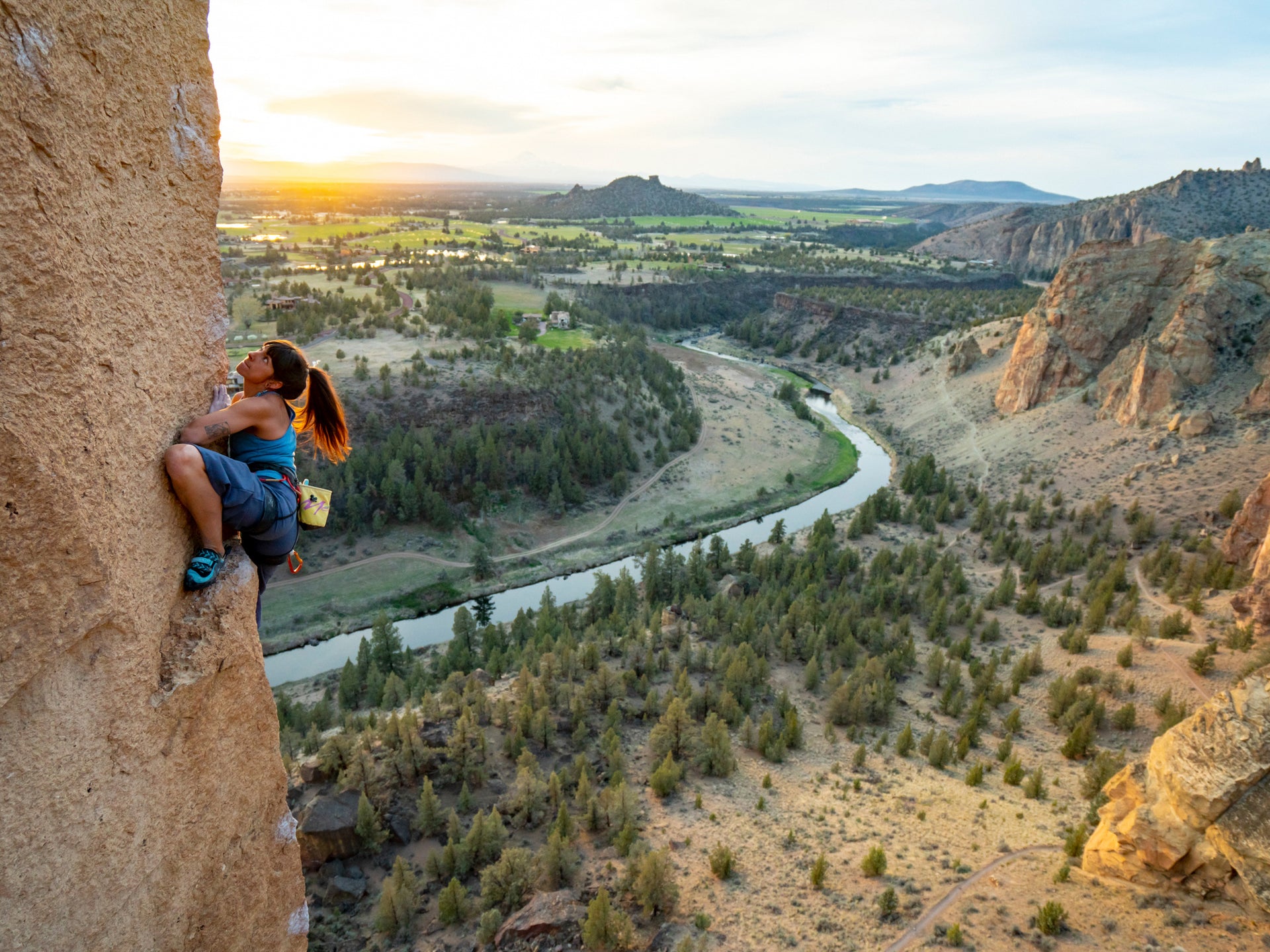
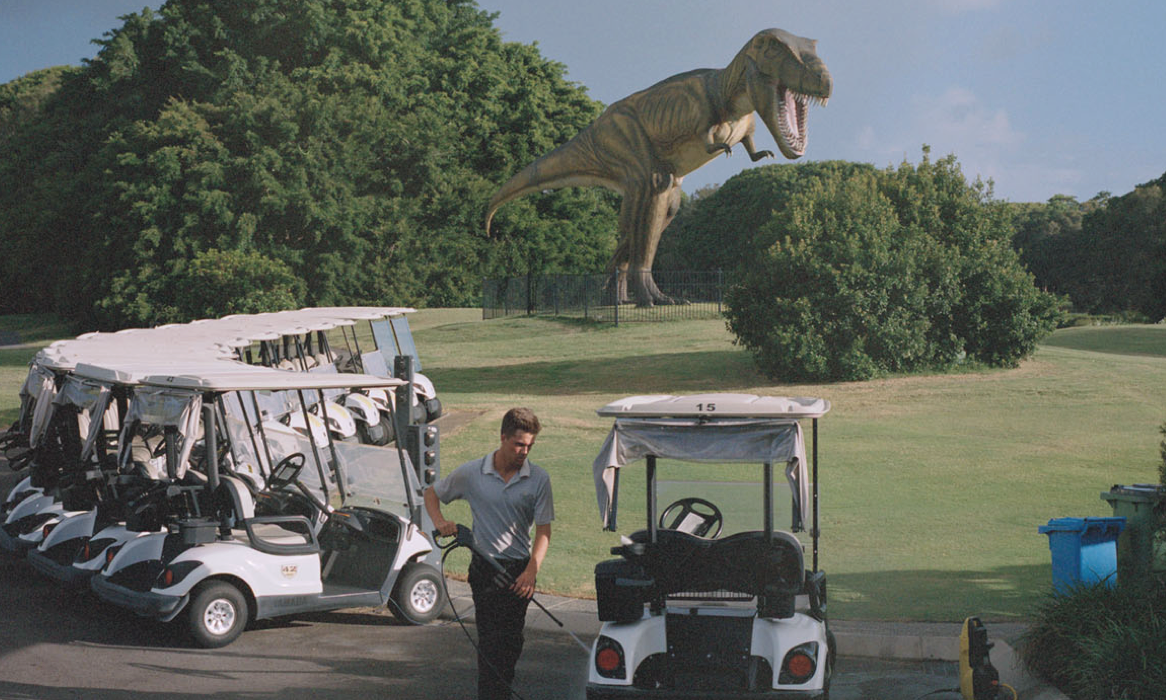
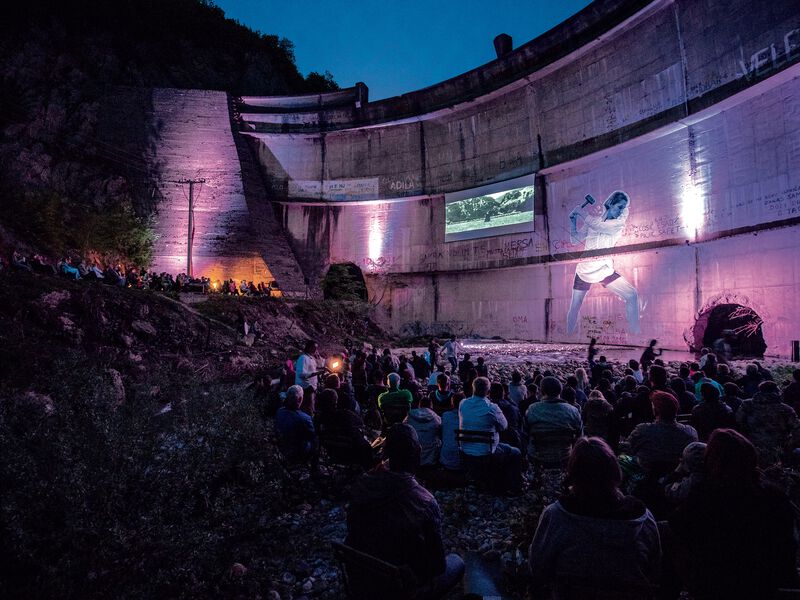





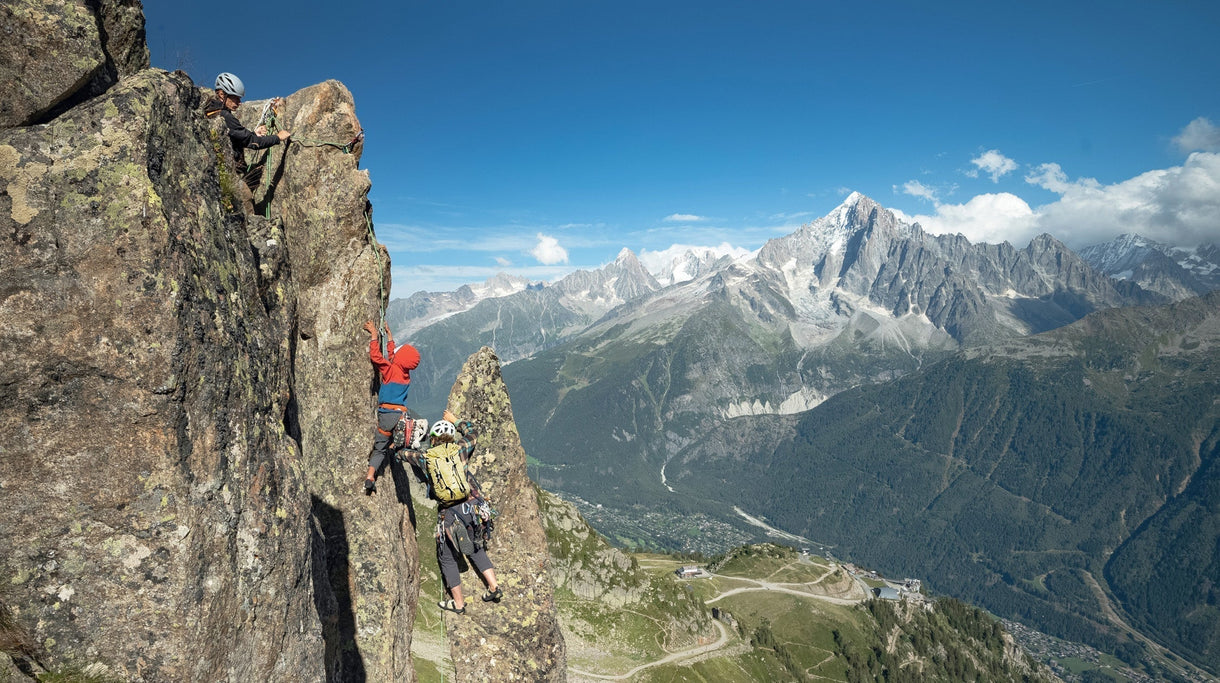

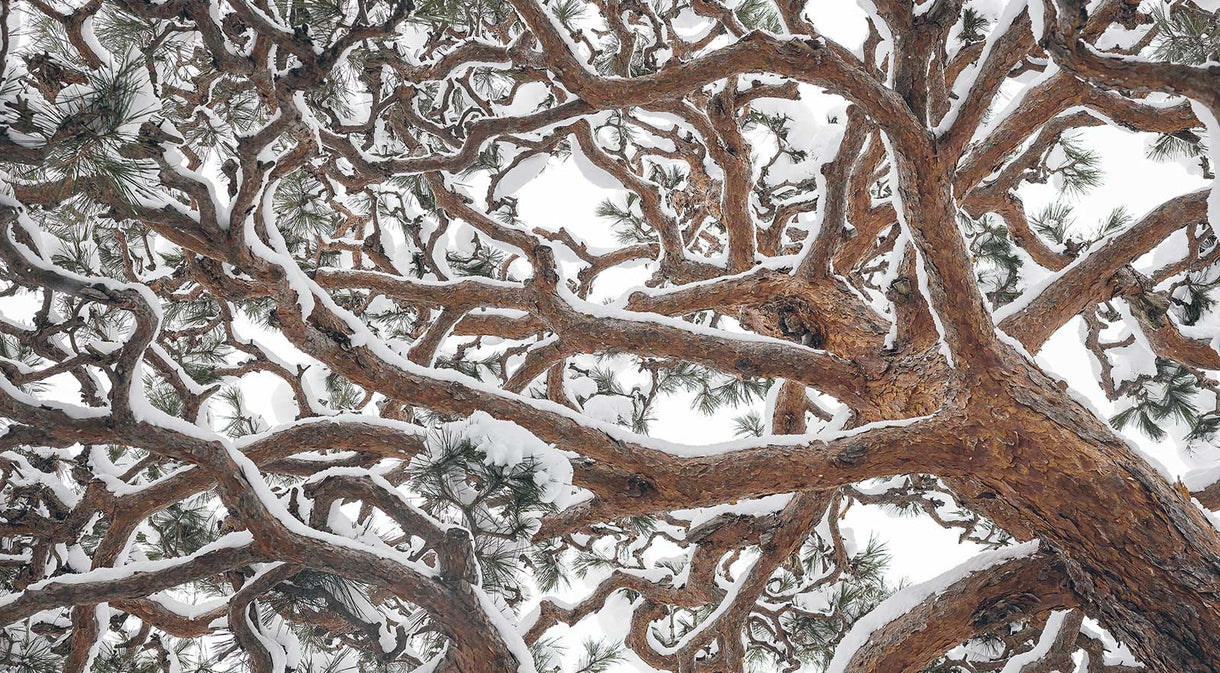
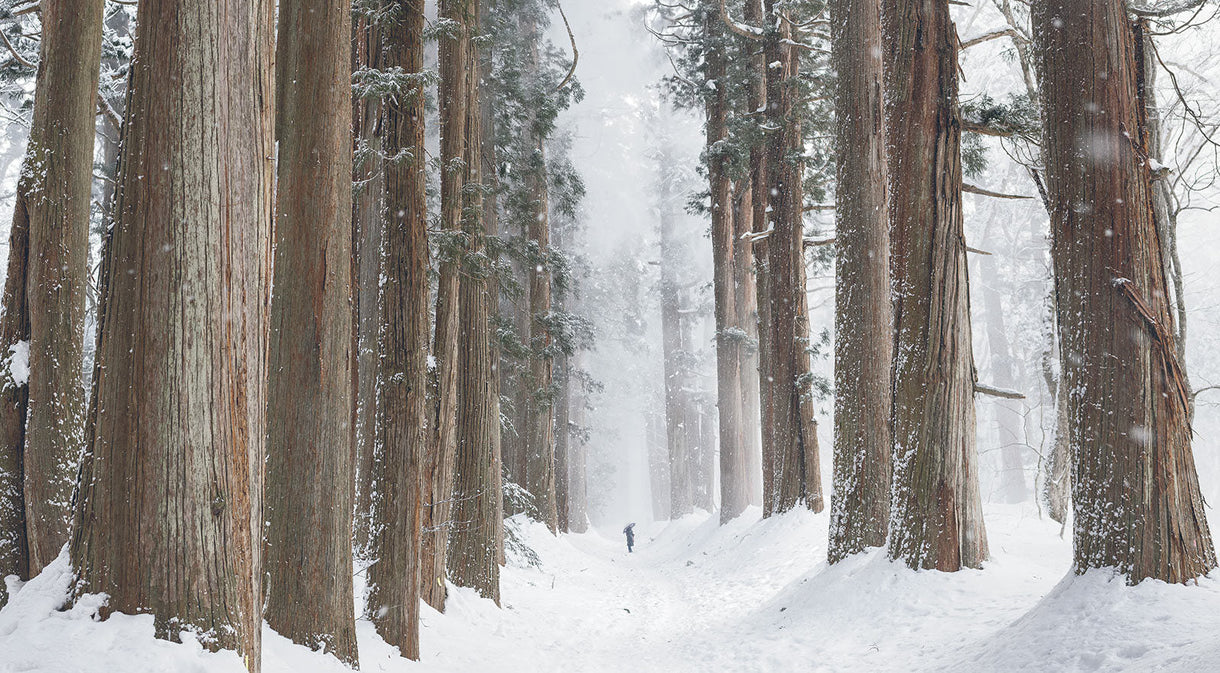
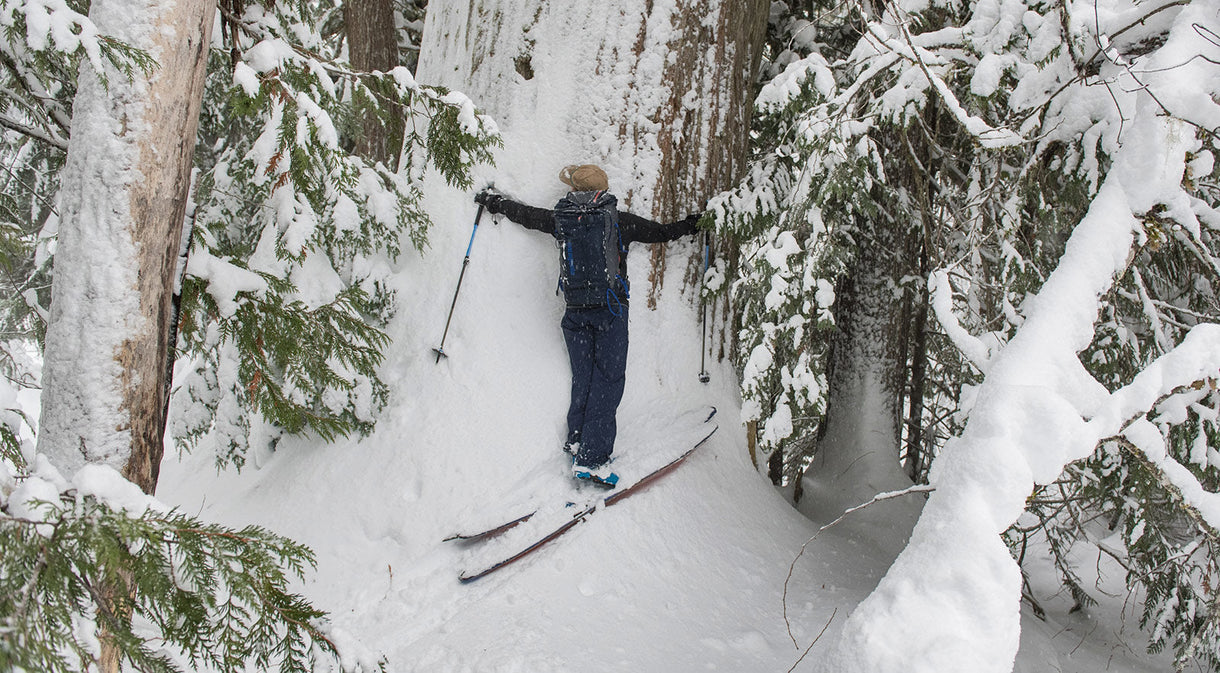
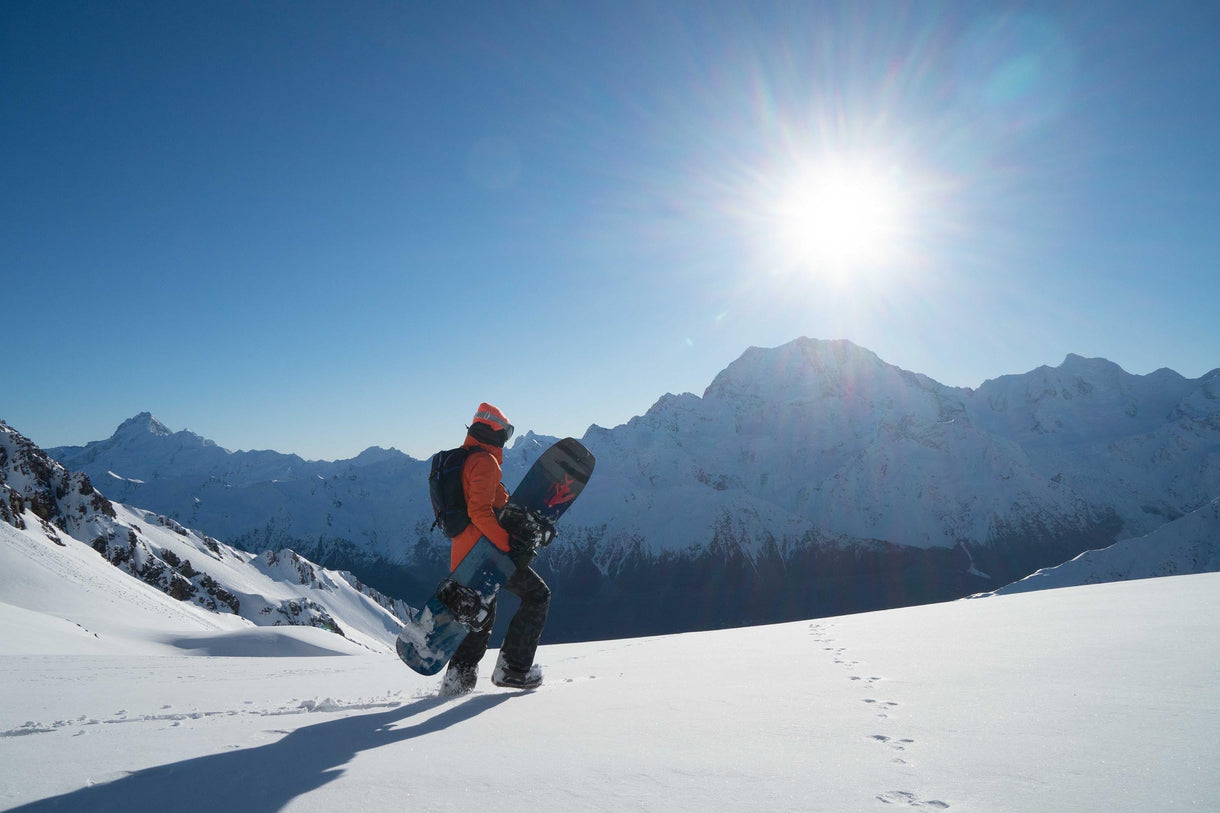
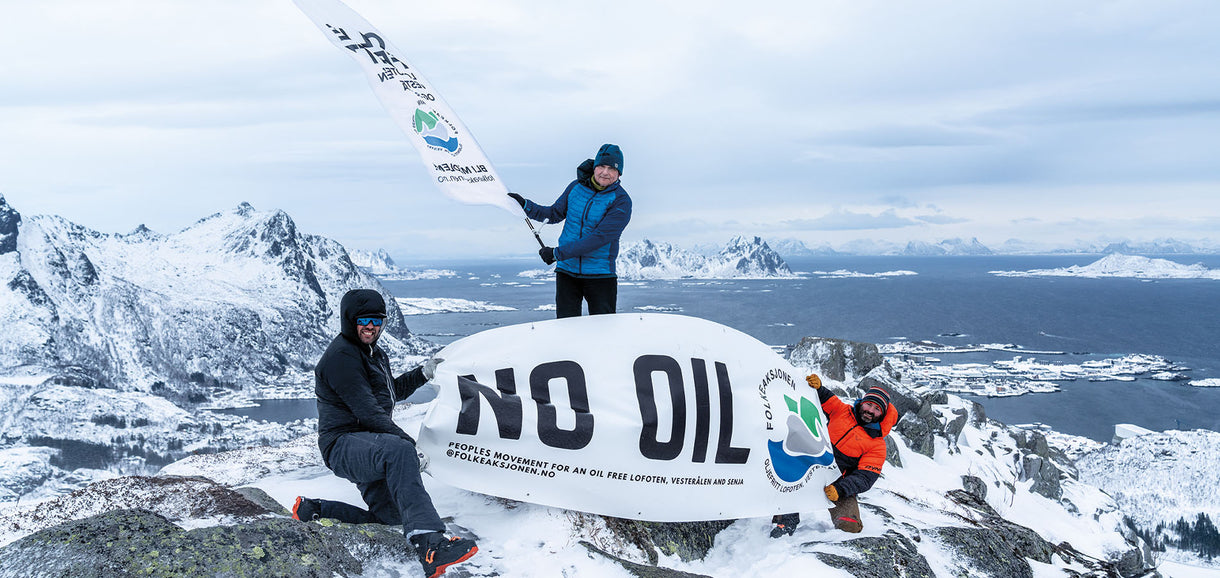
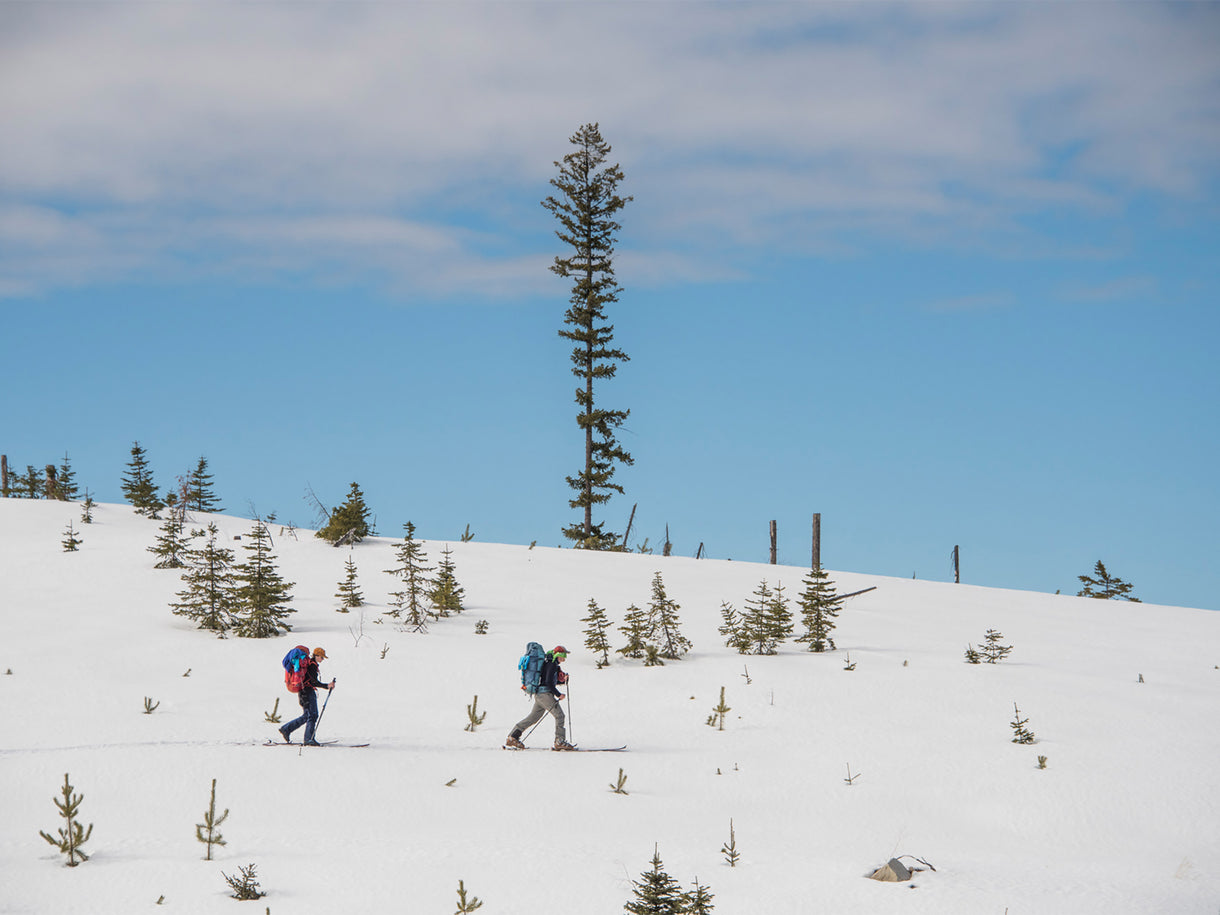
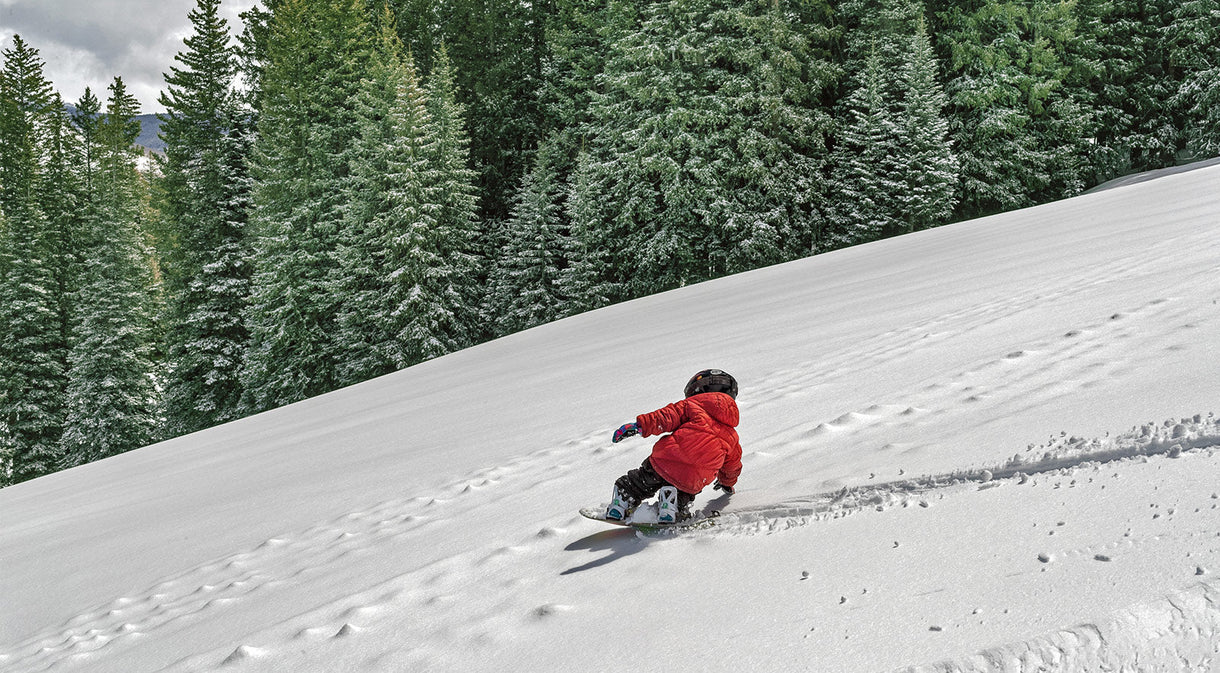

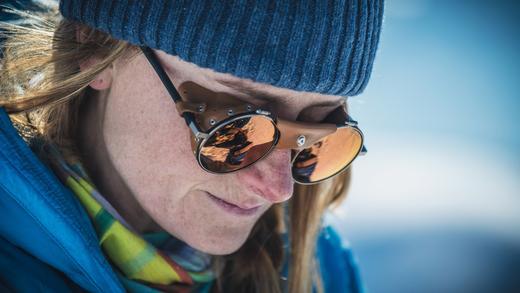
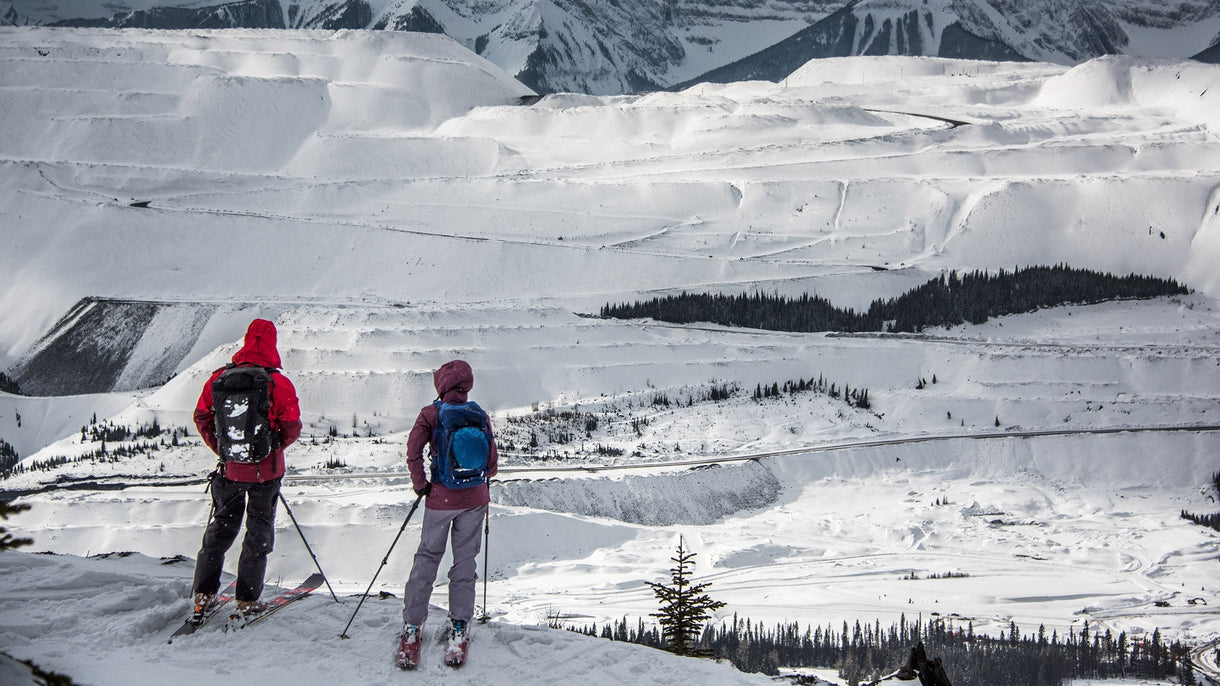
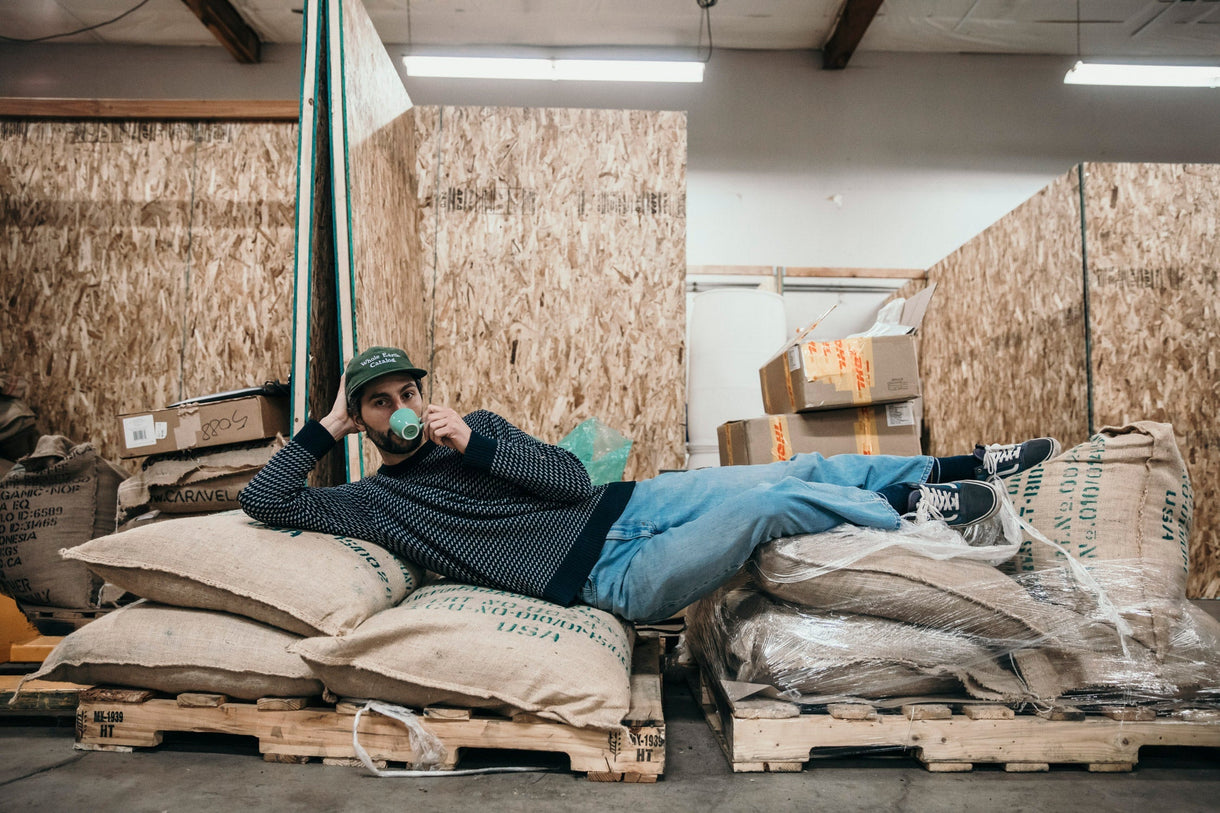
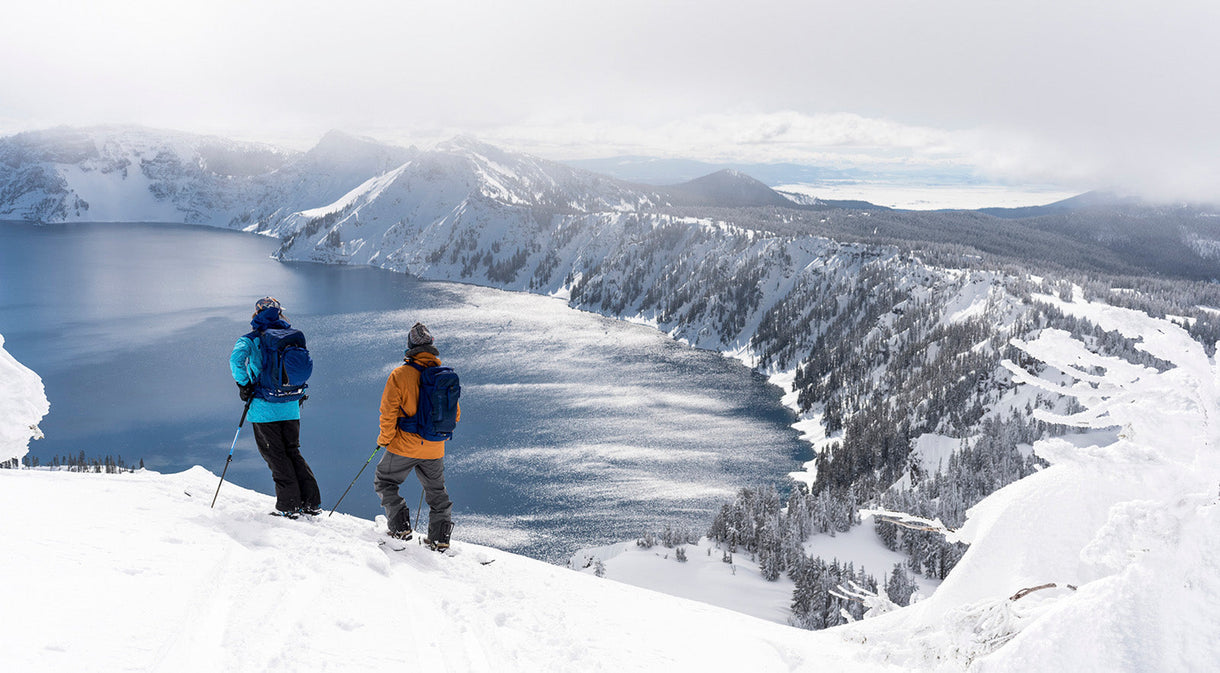
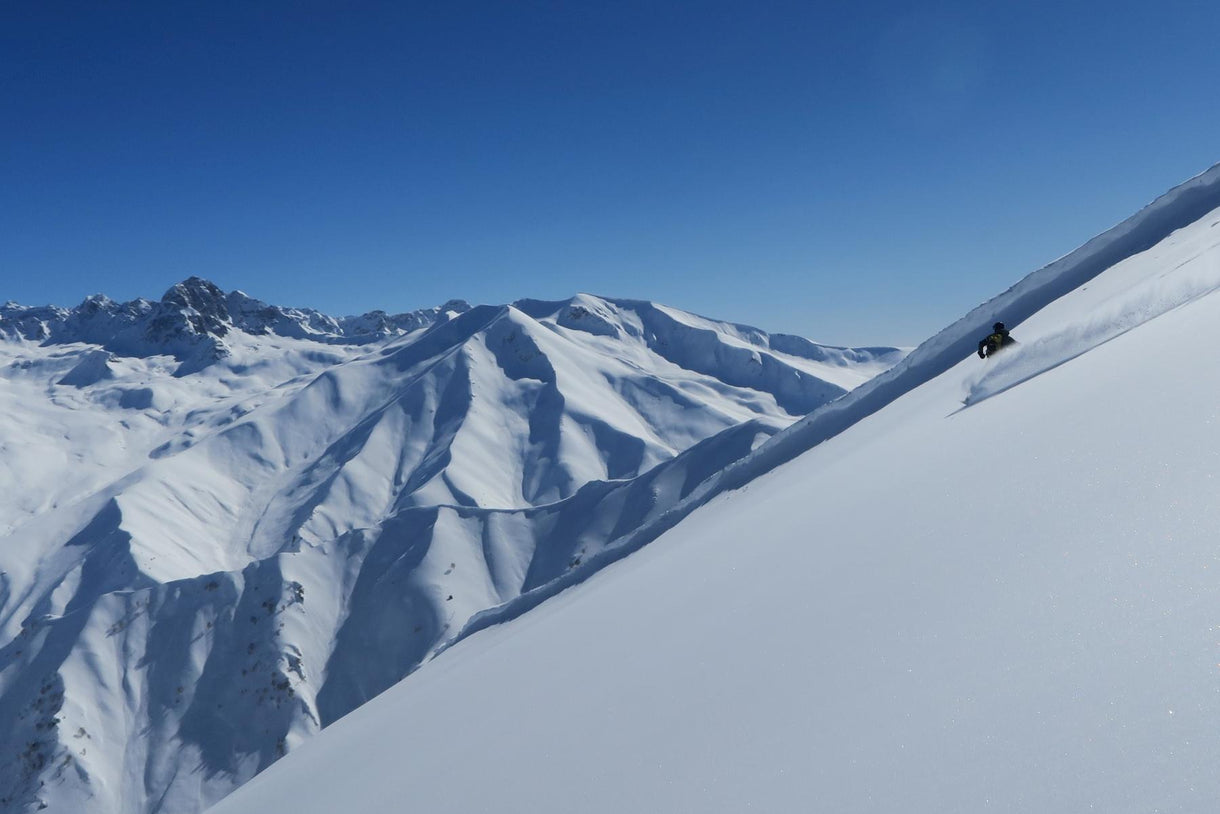
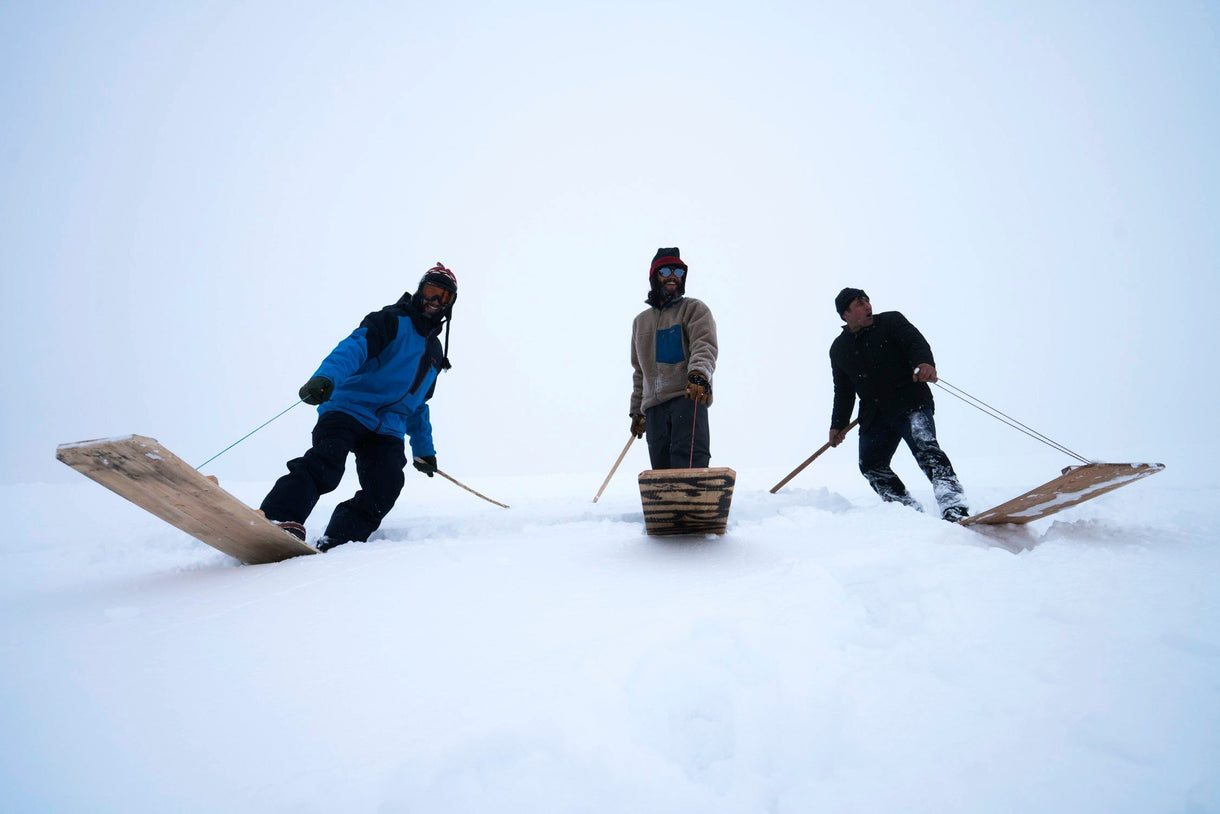
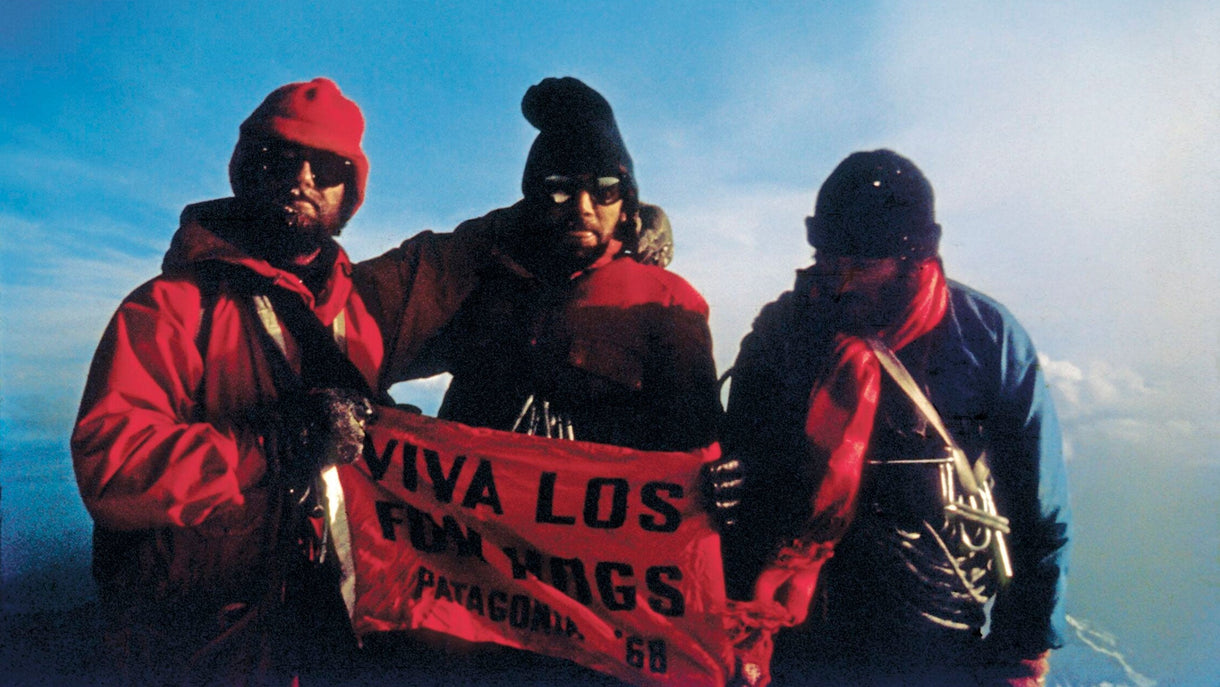
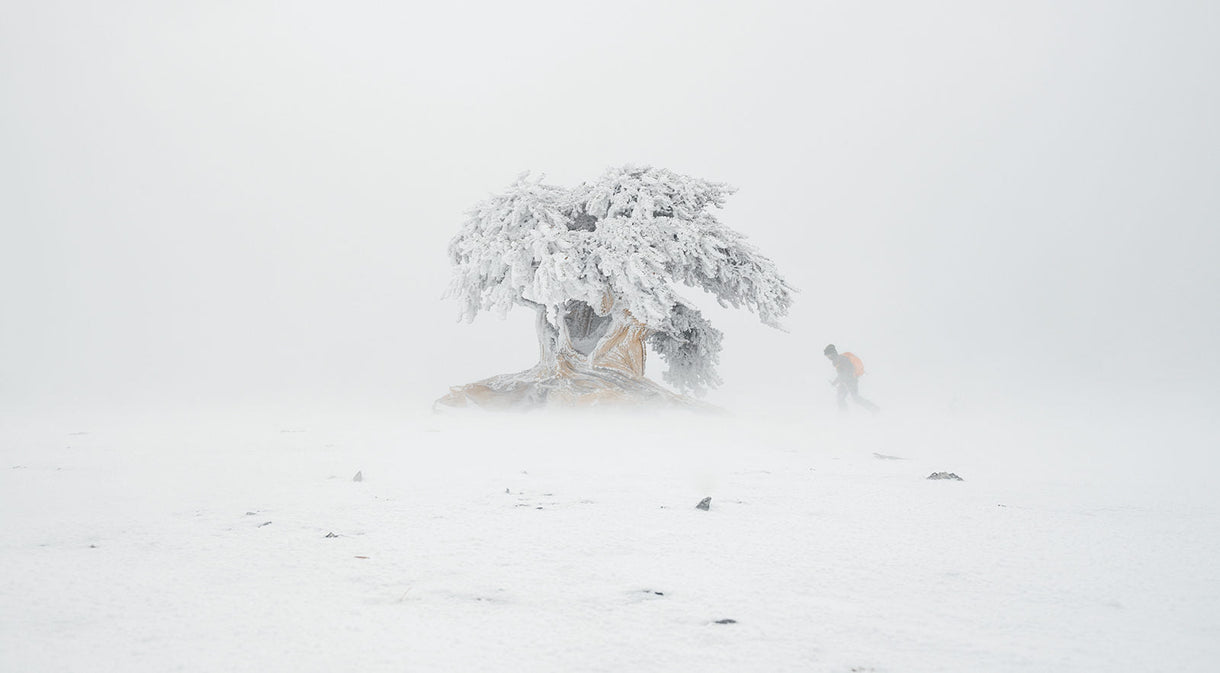
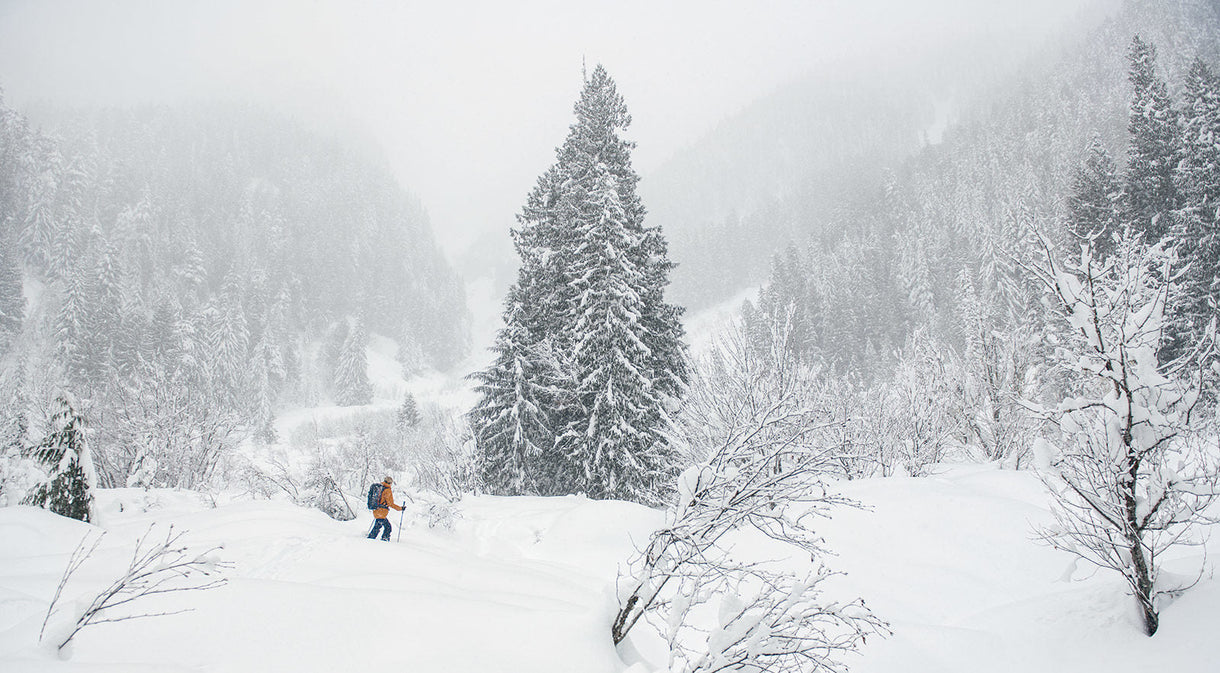
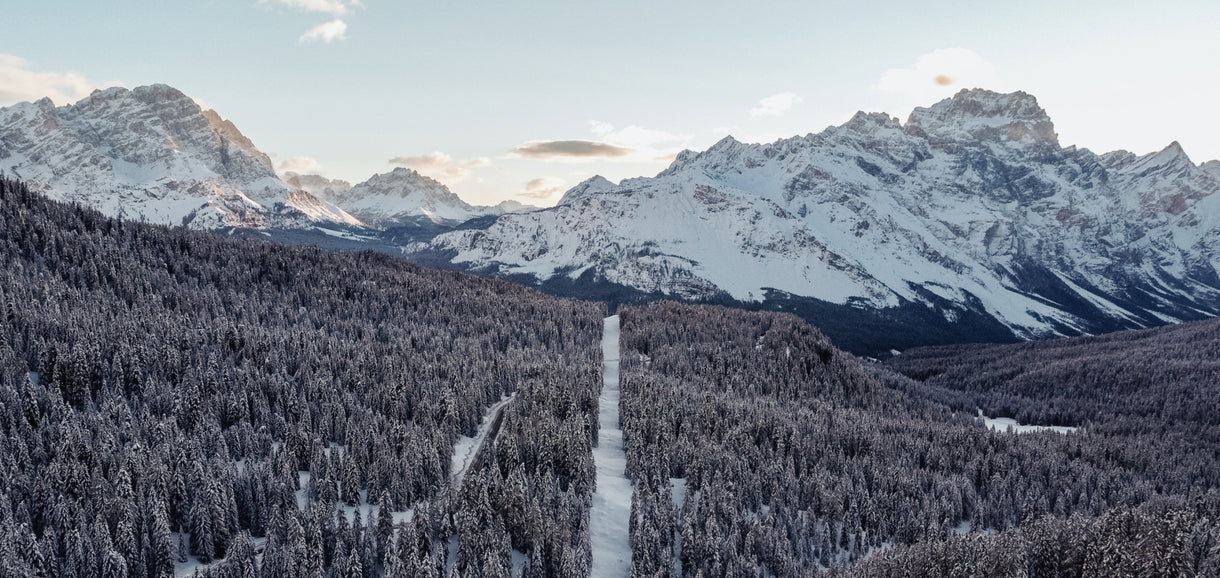
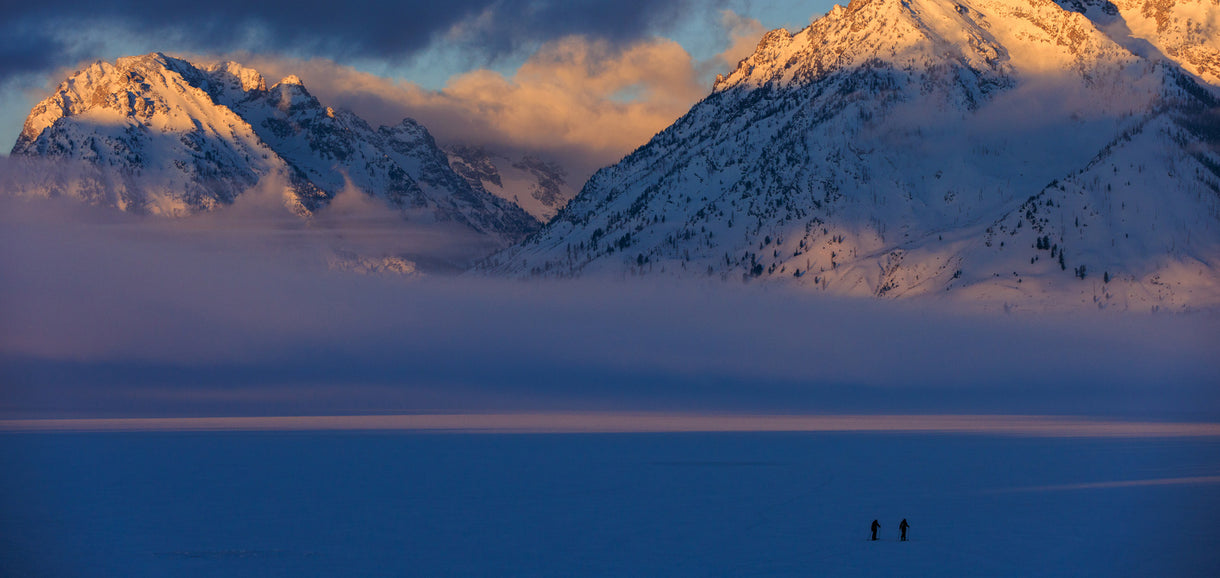
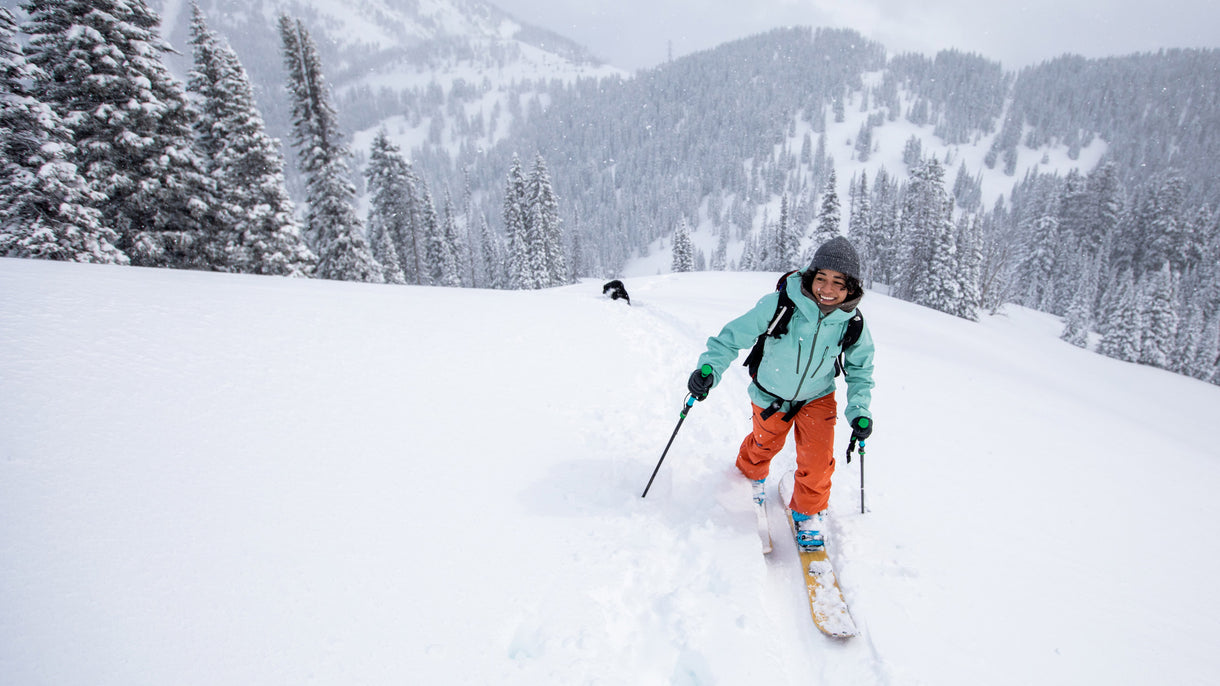
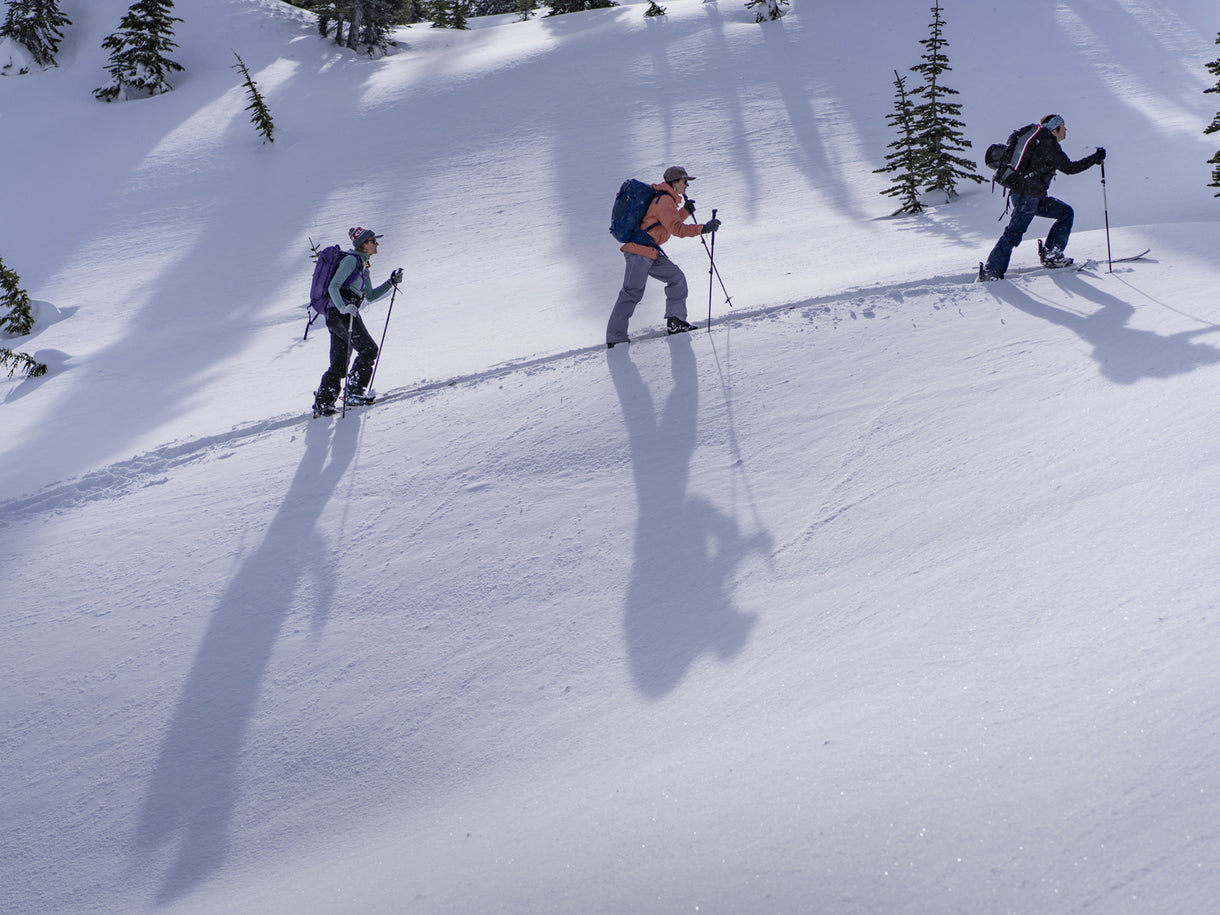
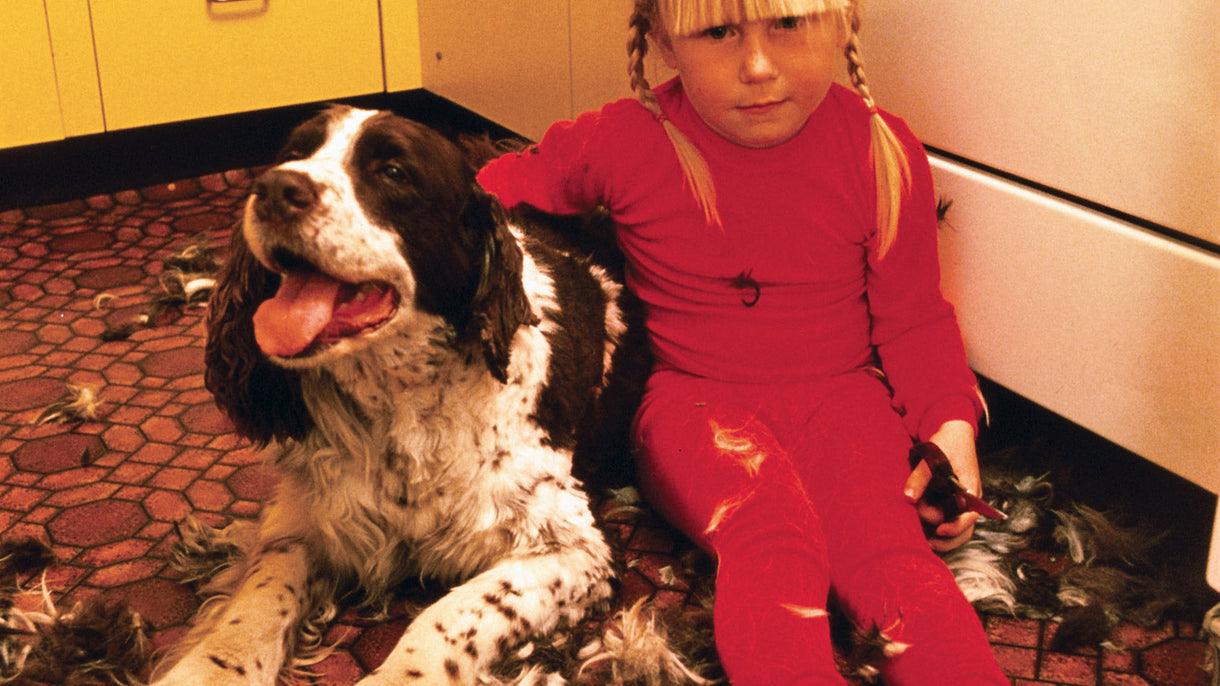
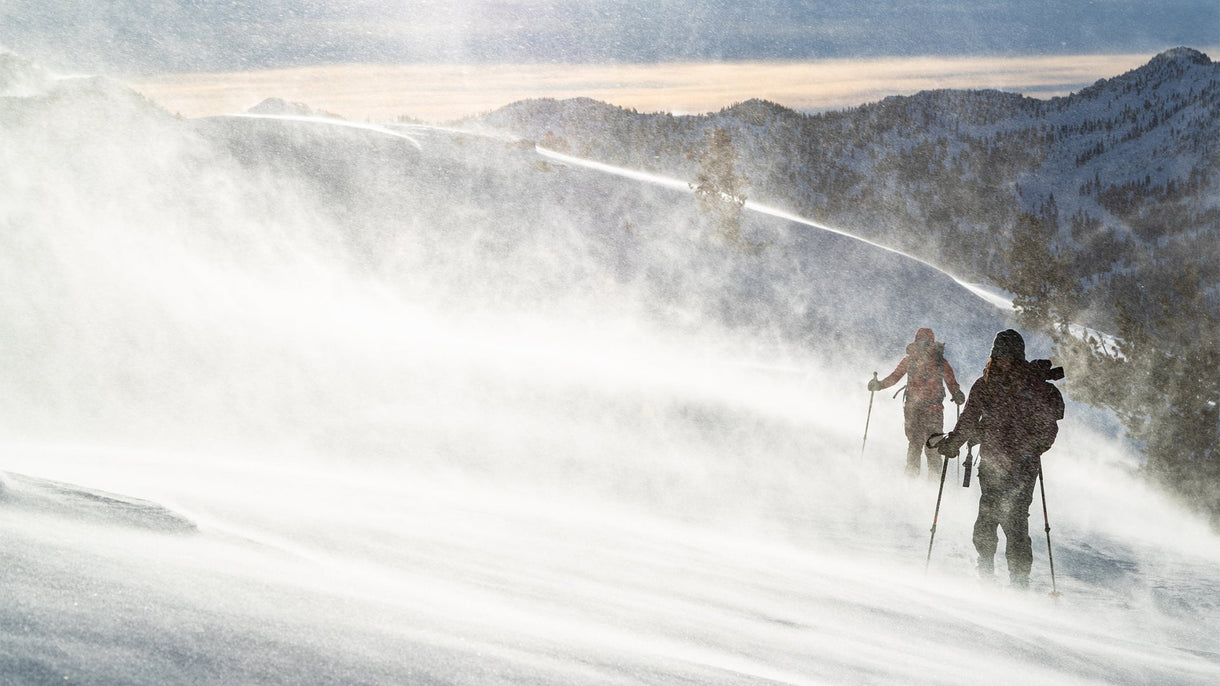

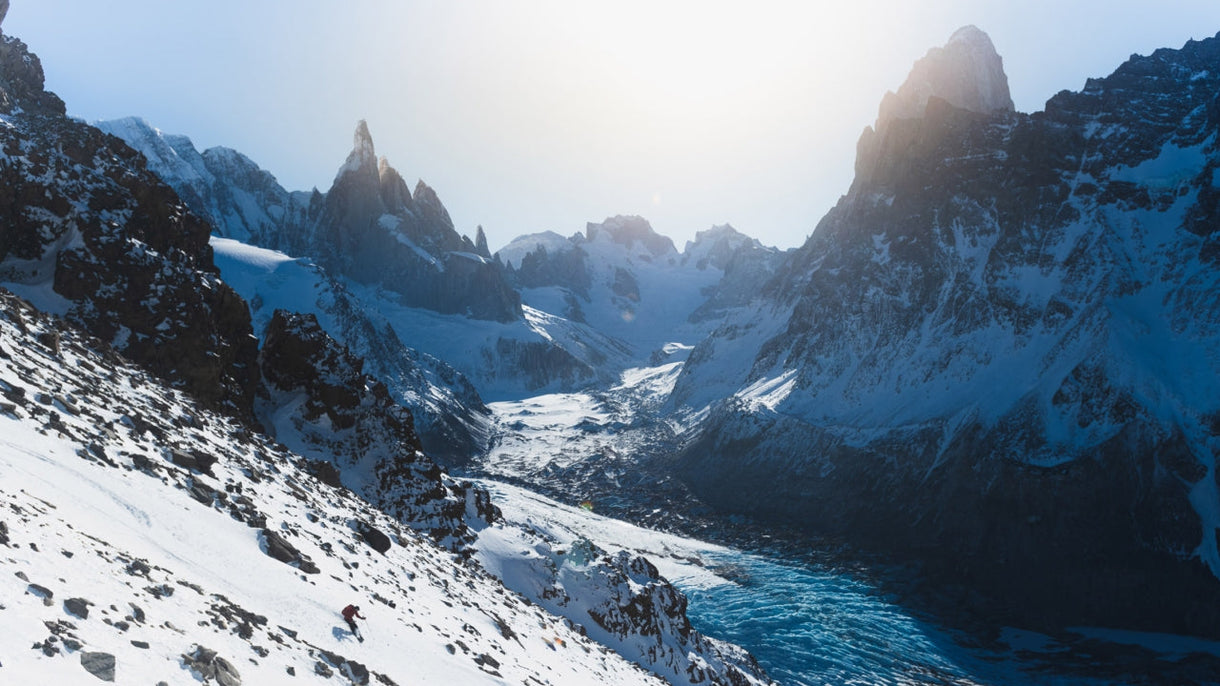
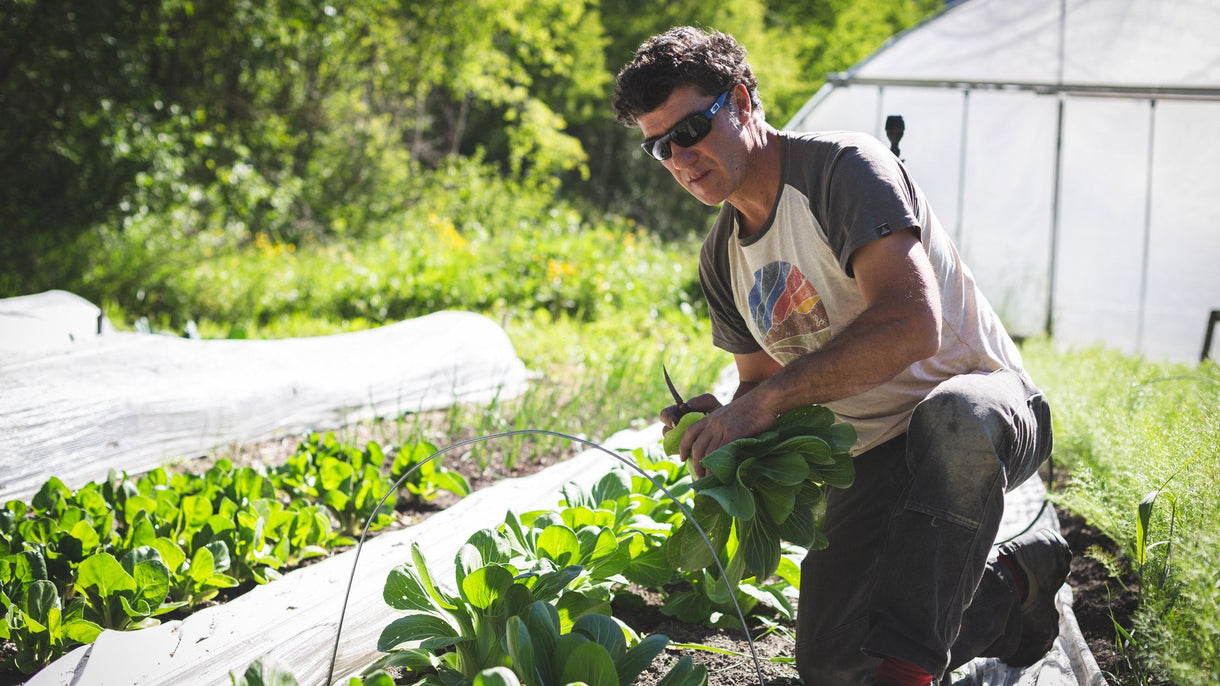
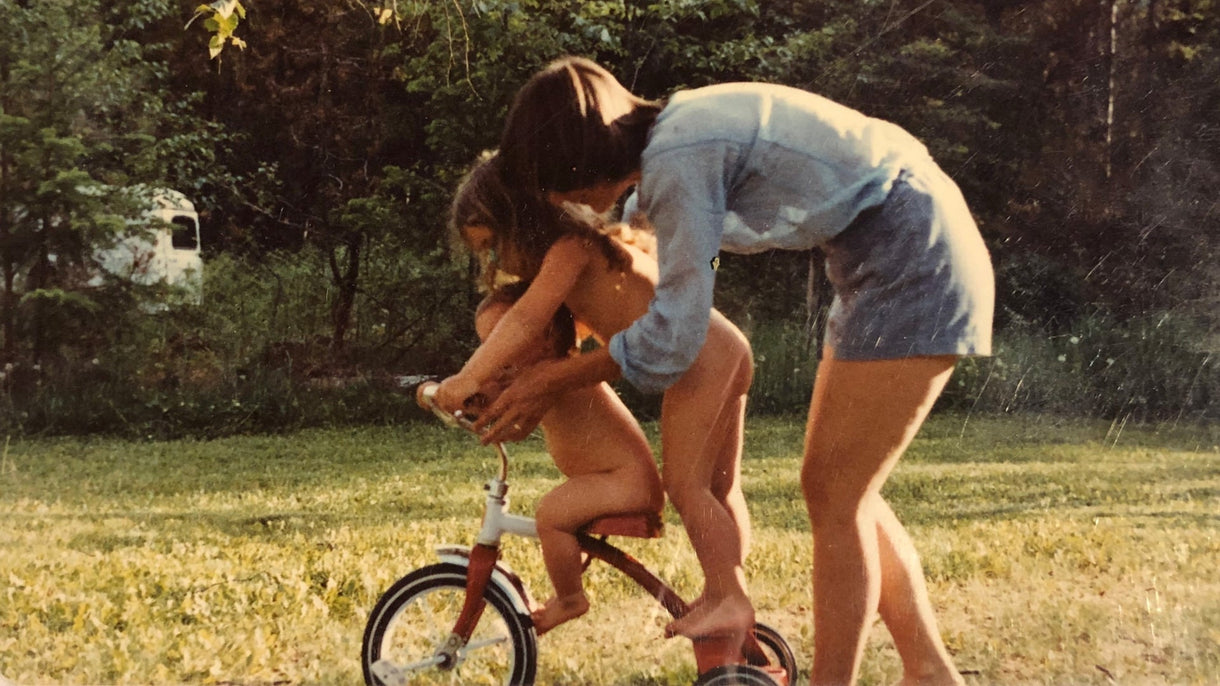
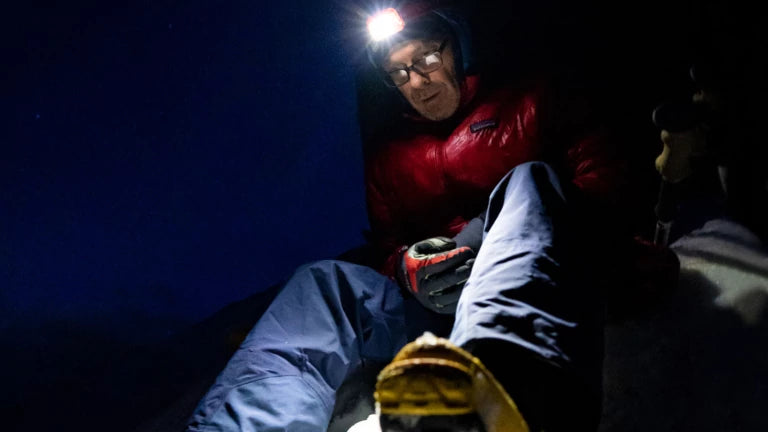
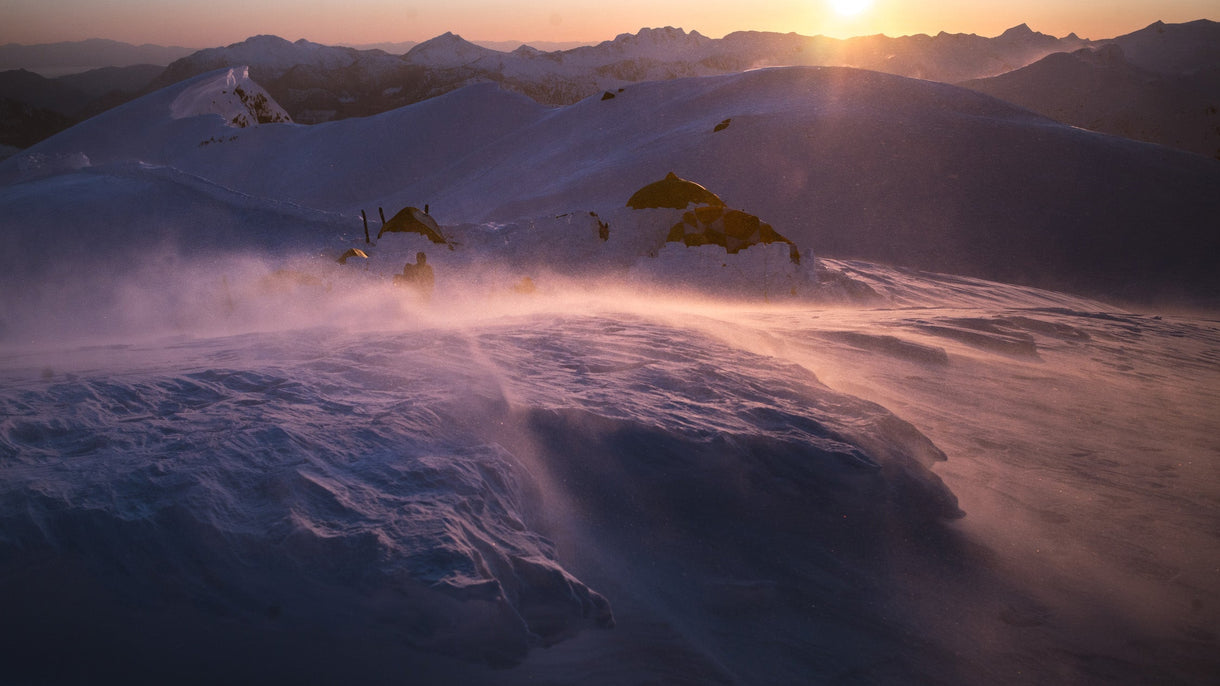
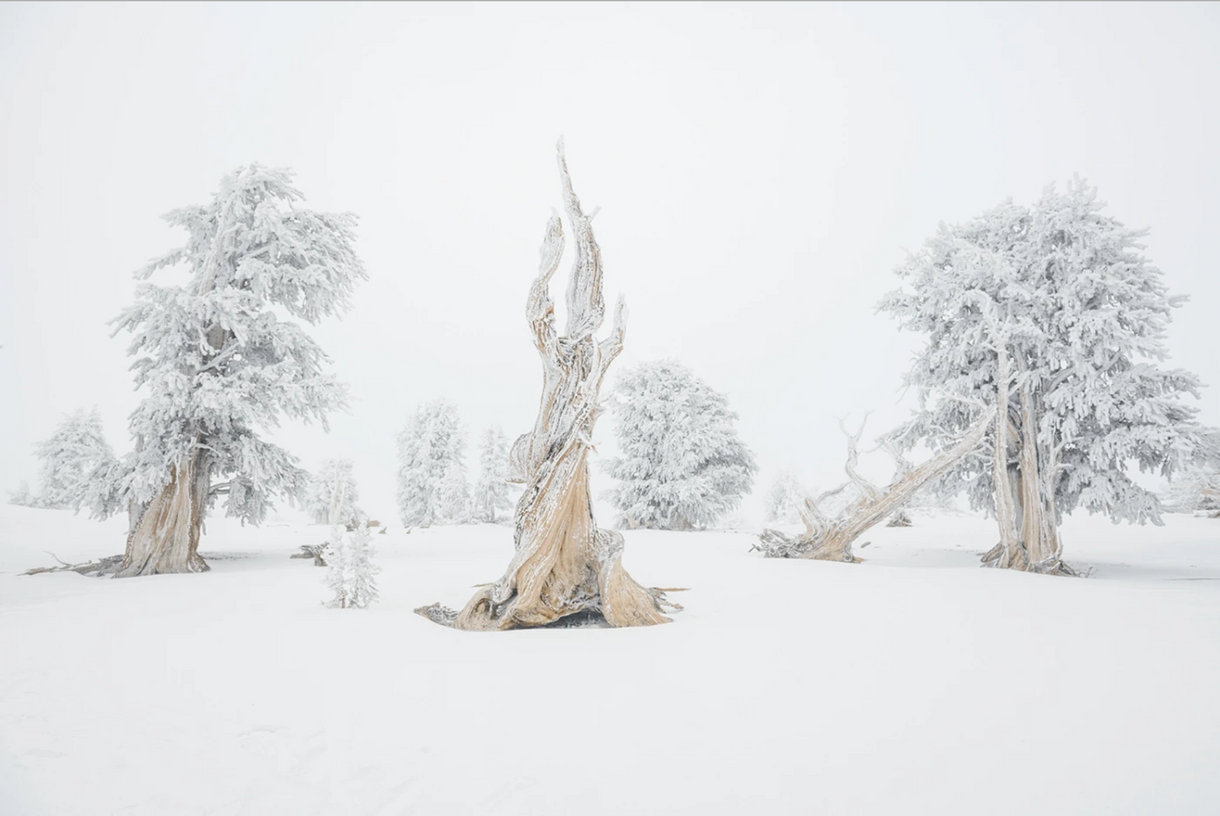
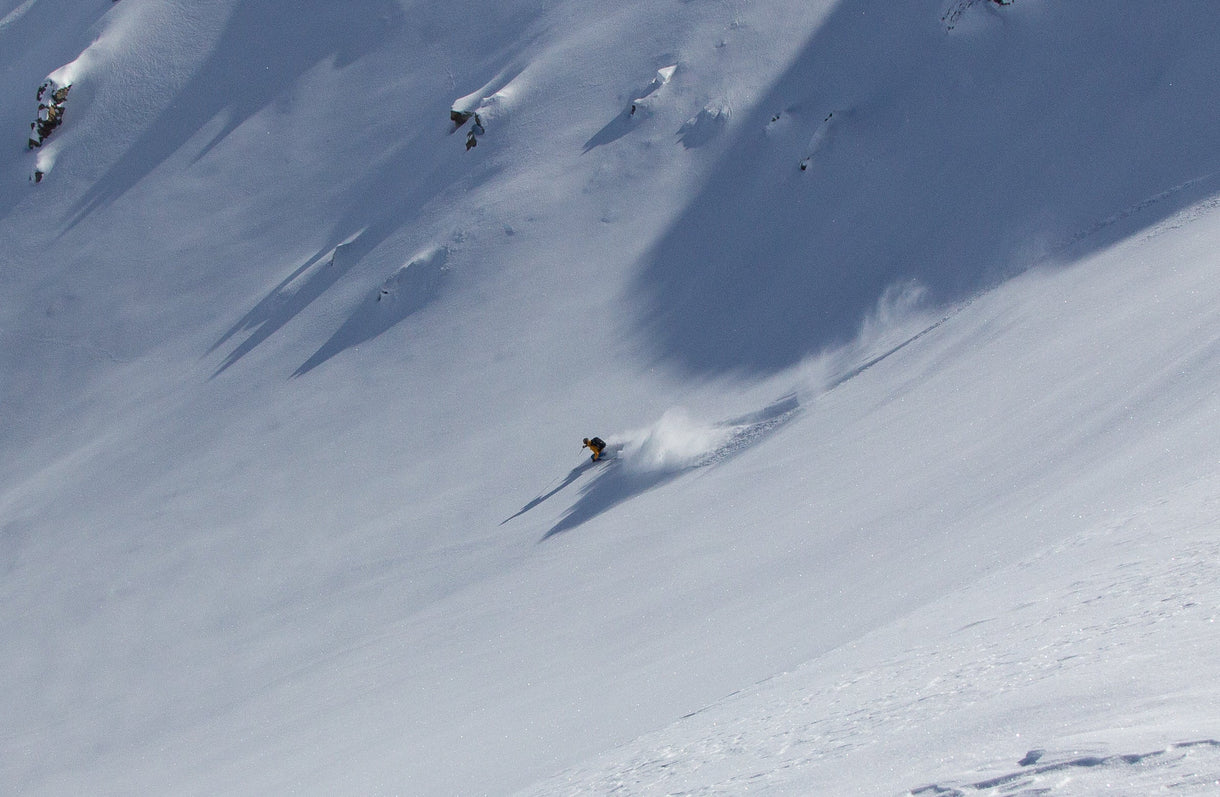

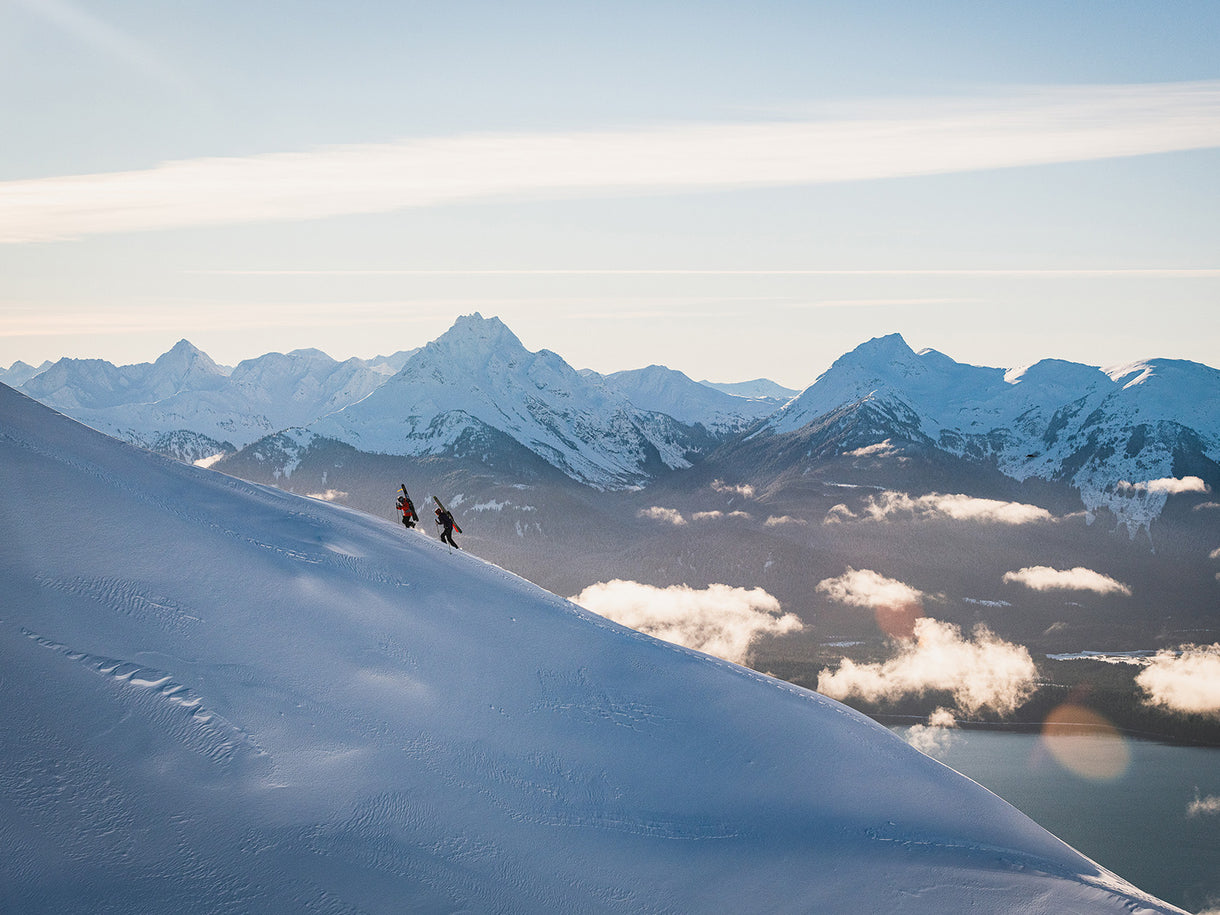
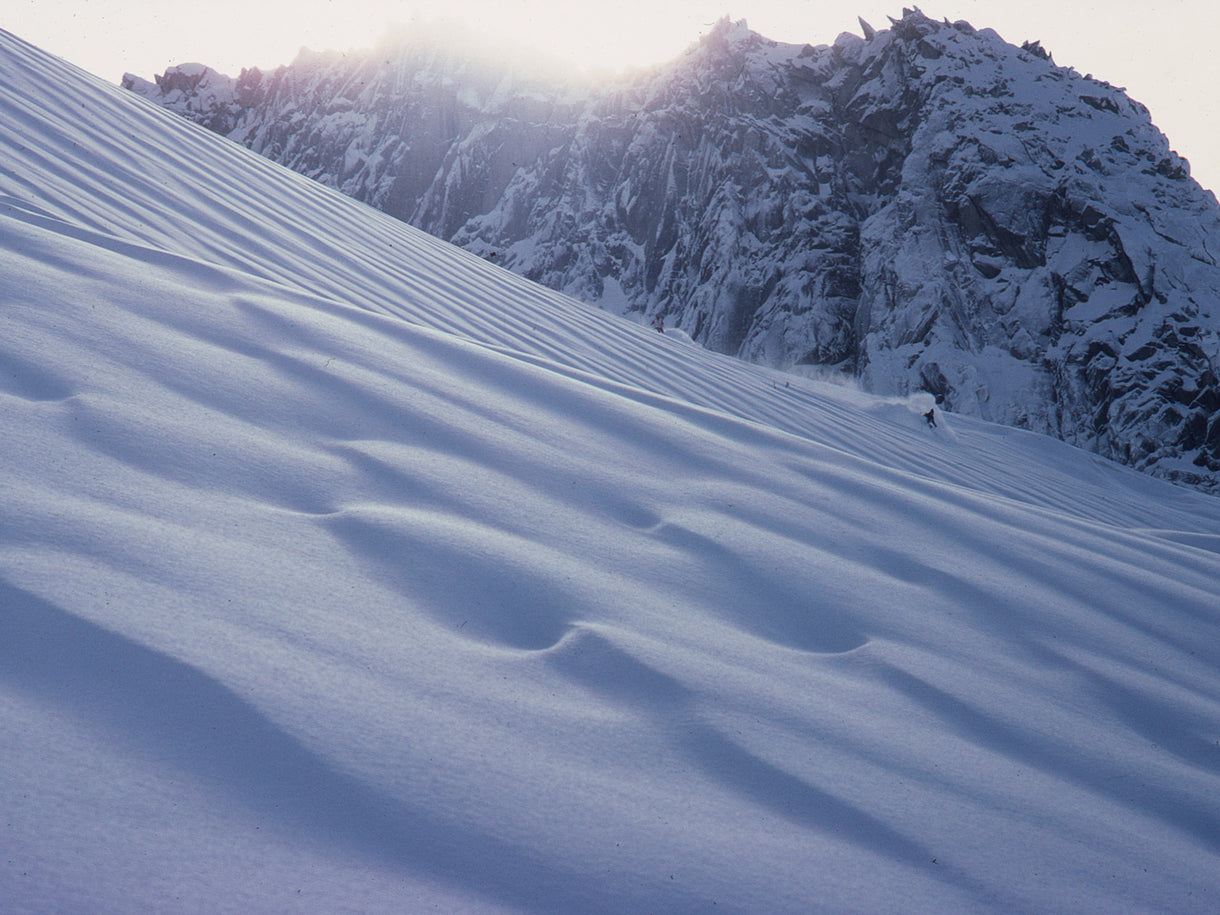
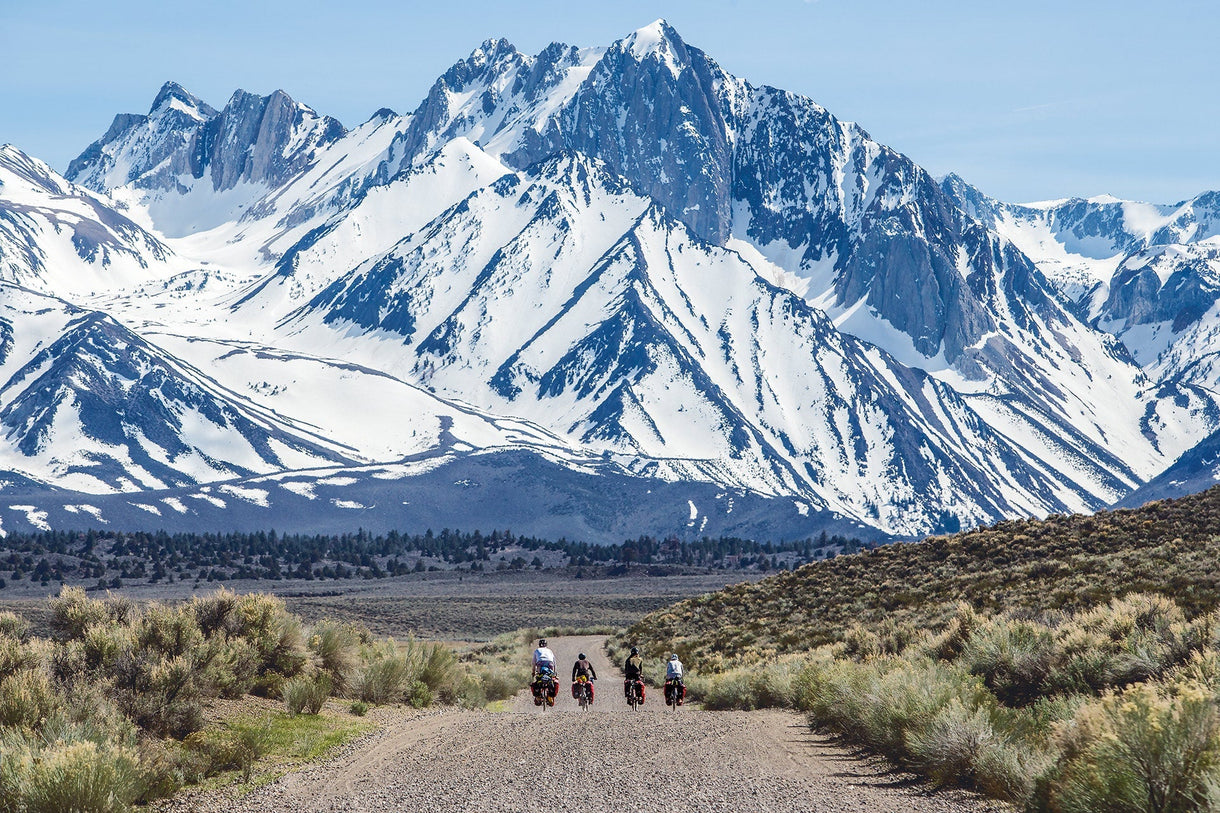
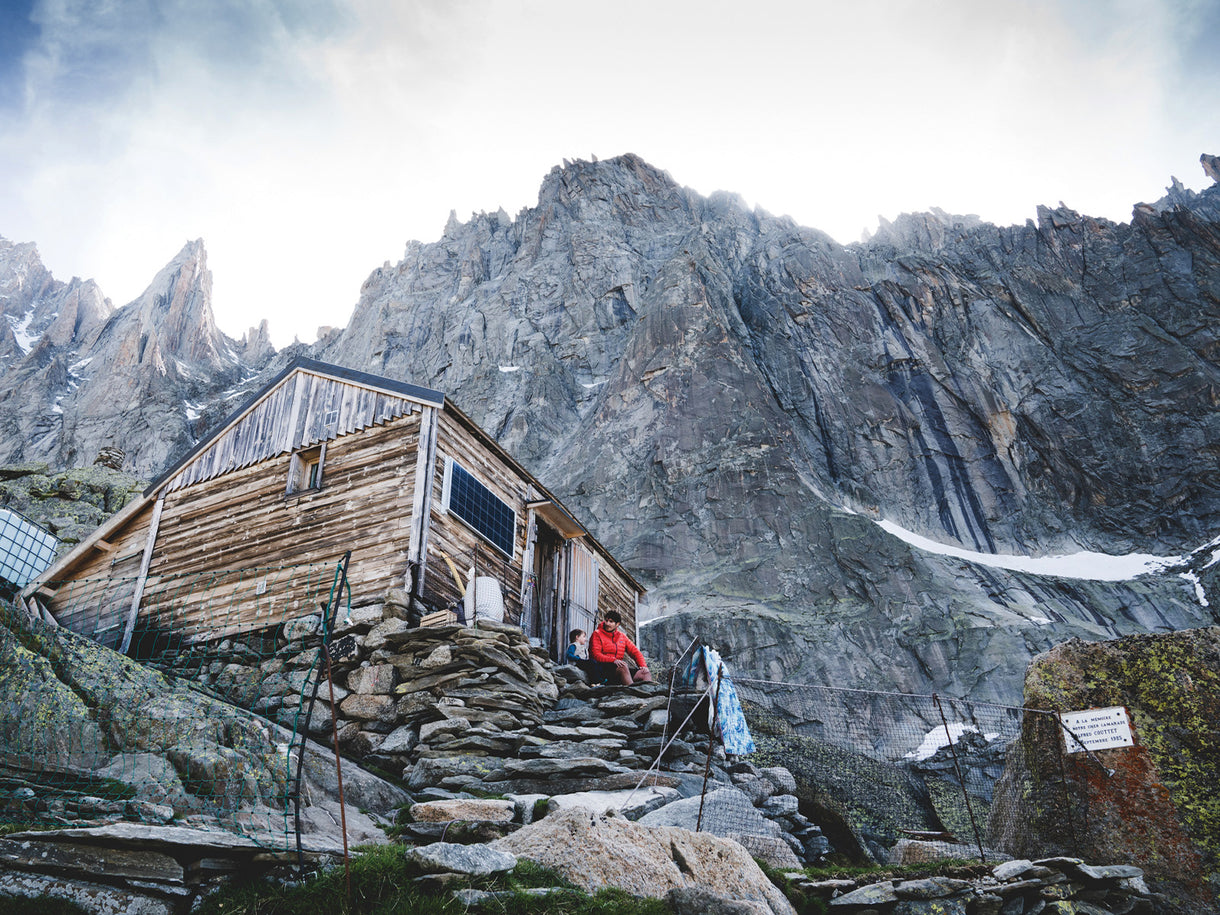



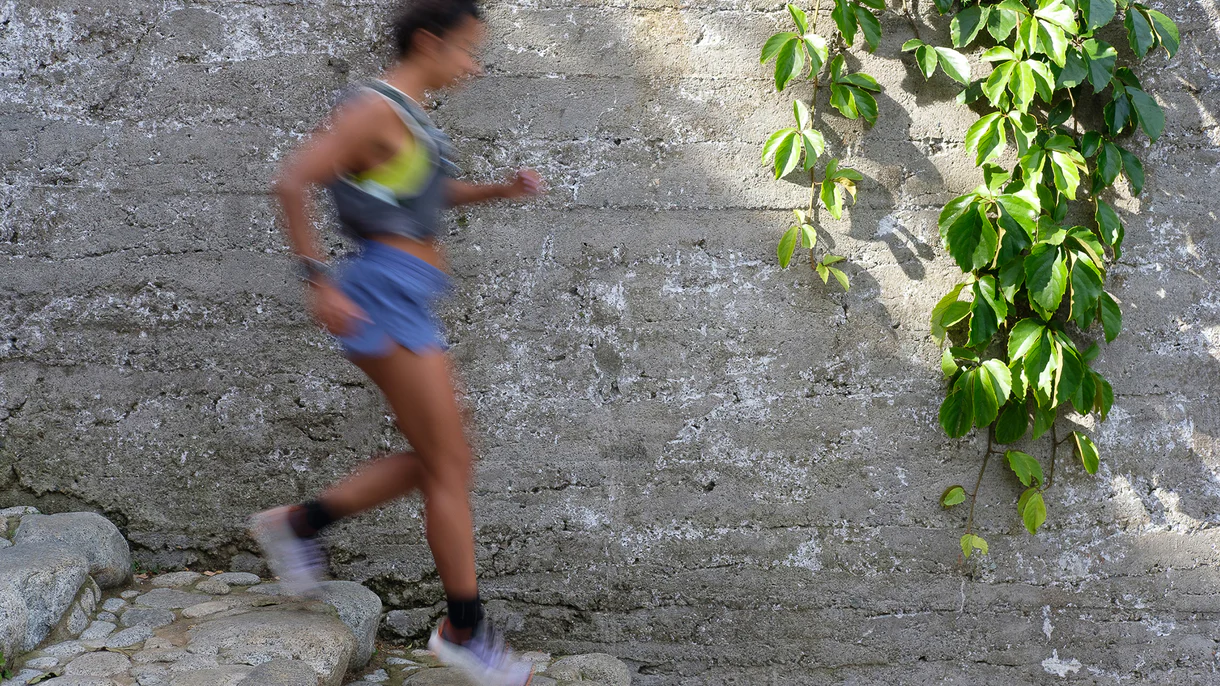
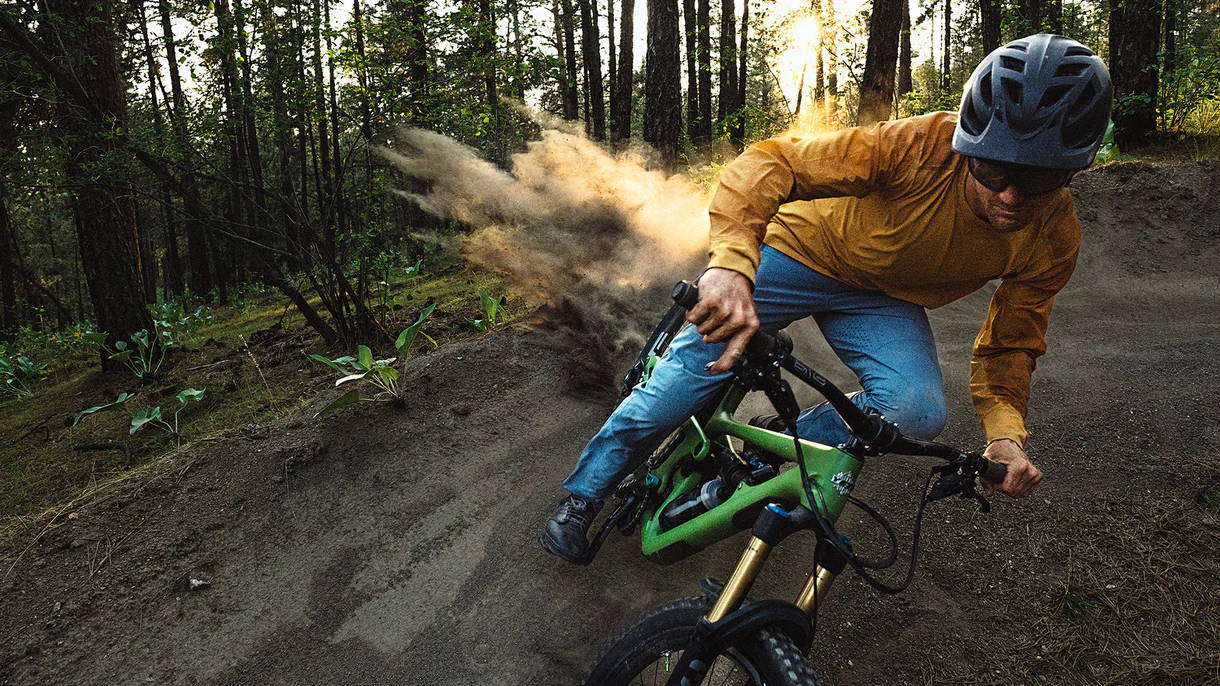
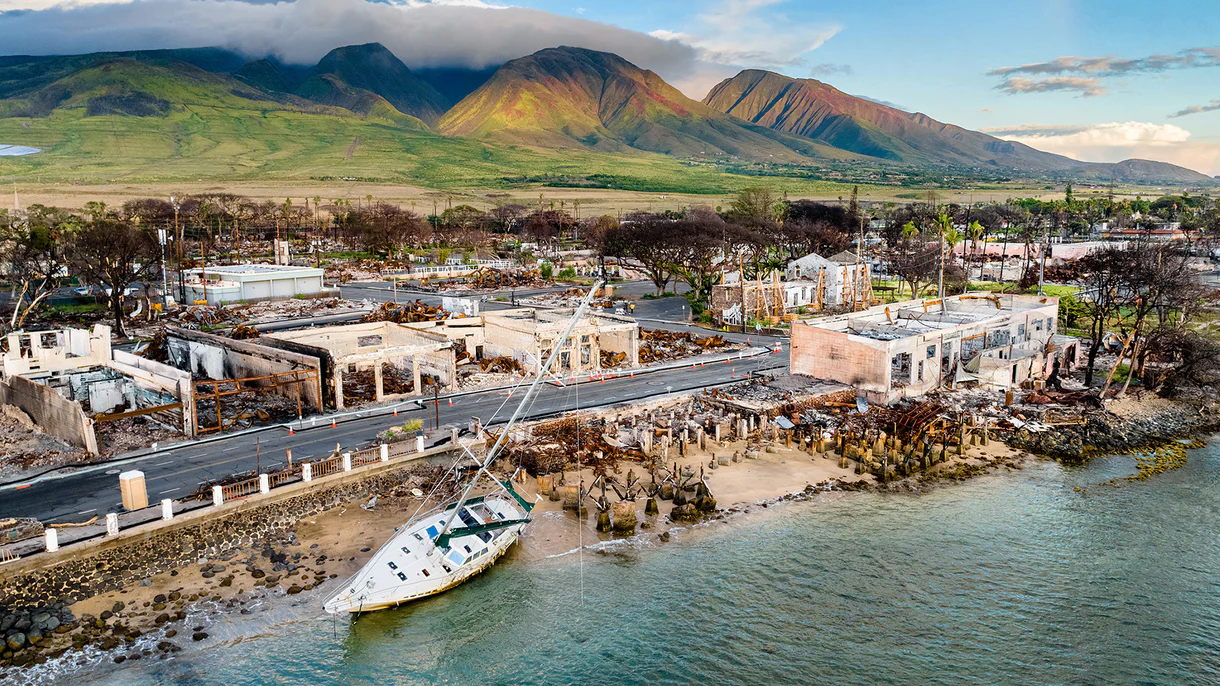



Dr. Len Necefer, Ph.D. is the CEO & Founder of NativesOutdoors, a native-owned outdoor media, apparel and consulting company. The mission of NativesOutdoors is simple: they are in business to empower indigenous communities through our products and storytelling for a sustainable world. He holds a Bachelor’s in Mechanical Engineering and a Doctorate in Engineering and Public Policy from Carnegie Mellon University. Previous to this role Len has worked for the U.S. Department of Energy and most recently the University of Arizona. His work melds the intersection of sport, environmental advocacy and indigenous peoples. Their films and stories have been featured in over 50 film festivals globally and multiple national and international news outlets.
Tara is an award-winning photographer, cinematographer and accomplished rock climber. Born and raised in Bend, Oregon, Smith Rock State Park is her heart’s home—even though she’s graduated from living in a truck to an apartment in Boulder, Colorado.